#is this a marketing issue or a filmmaking issue or something else. did i make up a guy to get mad at. maybe. but here are my 2 cents
Explore tagged Tumblr posts
Note
🌻?
as someone who wants to go into film ive been Musing a lot lately on the idea of making films and probably art in general about a certain group's experience and marketing it that way, particularly in the sphere of films about "womanhood" that are marketed / discussed accordingly. and wrt to that specifically i have come to the conclusion i don't think it's possible to make a film about "womanhood" / the experience of being a woman because it always ends up being like. a specific subgroup's experience of being a woman and/or limited in its scope BY virtue of trying to include everyone, simply because by trying to include an entire experience in 1 piece of art will limit your ability to delve into it any further than the surface level. my biggest case for this is barbie which is trying to be a film about Being a Woman but ends up portraying a limited experience of it more than anything. and i think that's like, fine, but i also think calling it a film about Women necessarily creates an expectation that it will be relatable to all women, which is not possible, the same way making a movie about the lgbt experience won't be relatable to all lgbt people. i think it's significantly more impactful instead to make a movie about A Woman who is complex and multifaceted. like i KNOW barbie is necessarily a film where barbies will be kind of two dimensional because of being like. barbies but even still ken feels like a more developed character which is uhhhhh something. not to compare anatomy of a fall to barbie but i'm going to do that in that film sandra is complicated and mean and ambiguous and that is doing a lot more for the representation of women on screen (not that everything is a question of representation but that's another can of worms) simply by letting its female lead be a complete person with depth. challengers does this too to an extent. ultimately i think what barbie DOES get right is the theme of growing up + in some parts barbie's desire to become human. that there is significantly more compelling than its nods towards feminism. and i'm not gonna say i expected mattel's toy commercial to be a subversive masterpiece and the circumstances of its production are significantly different to anatomy of a fall but when the film is lauded as being about womanhood i WILL be poking holes in that argument because i love to complain and overthink. if they hadn't done that i wouldve liked it. and anyway barbie's feminism falls flat even beyond the surface level because at the end barbie still has to a) manage ken's emotional reaction and b) apologise for being unavailable romantically which as an aro person i Don't like. which may be somewhat influencing my opinion on the film. i think this may be word salad at this point so sorry if this is entirely incomprehensible but in conclusion: anatomy of a fall is a good film
tldr: making a film/piece of art about a specific group's experience (i.e. "womanhood") and marketing it as such is kind of reductive and really difficult because you can never really capture the diversity of experiences of being a woman, lgbt, etc. more effective to make a film about 1 specific experience in said group and allowing that character to be a multifaceted person
#wasn't expecting this to uhhhh get this long but you know ive got thoughts#like i also think a lot of this is an offshoot of the idea of relatability. not everyone will relate to everything and that's ok#is this a marketing issue or a filmmaking issue or something else. did i make up a guy to get mad at. maybe. but here are my 2 cents#neon answers#ongreenergrasses#thank you for the rant opportunity sorry if this is impossible to read / parse#anyway ive been thinking about my shitty action movie concept again. much to ponder
4 notes
·
View notes
Text
Add interview where GL talks about his creative process in making the prequels.
You've often said that Star Wars movies are primarily meant for children, but The Phantom Menace was always going to be a film that was going to be significant for twenty/thirtysomethings. How did you address this problem?
Basically I didn't. I kept it as it was originally intended. You can't play too much to the marketplace. It's the same thing with the fans. The fans' expectations had gotten way high and they wanted a film that was going to change their lives and be the Second Coming. You know, I can't do that, it's just a movie. And I can't say, now I gotta market it to a whole different audience. I tell the story. I knew if I'd made Anakin 15 instead of nine, then it would have been more marketable. If I'd made the Queen 18 instead of 14, then it would have been more marketable. But that isn't the story. It is important that he(Anakin) be young, that he be at an age where leaving his mother is more of a drama than it would have been at 15. So you just have to do what's right for the movie, not what's right for the market.
You mentioned Darth Maul. A common reaction of audiences is "Maul is so cool". So why isn't he in it more?
(Resignedly) It's not about him... ha, ha, ha. Obviously everyone likes the villain better than they like the heroes, that's sort of a tradition. And obviously I was trying to make a villain who
was sufficient to replace Darth Vader, because Vader was such a great villain, I needed something to stop people saying, "ah, what a wimpy villain next to Darth Vader." I wanted something that revealed a little more understanding of what an apprentice is, because this is obviously where this is all going. At one point, when Obi-Wan kills Darth Maul, he just fell in the pit. I looked at it and thought this isn't going to work because, if people like him enough, they're going to want him to come back and they're going to assume somehow he gets out of it. So I had to cut him in half to say that this guy's gone, he's history, he ain't coming back. I'll come up with another apprentice. The whole issue of having apprentices, poor Darth Sidious trying to replenish his apprentice supply, is one of the main plot points.
Does the Podrace stem from your days as a boy racer?
I like racing. I love the speed and I'm a very kinetic person in terms of filmmaking. I love the movement of film more than anything else. The cinematic quality of it attracts me. I like visual imagery, but I started out in pure film which is really a kinetic experience. So that's where my focus is. That's why I intend more of a kinship with silent films than more modern film. I like the old cinema. My films are more of a hybrid – a different style of filmmaking to what I call talking head movies. Some people don't get it. Especially the more academic types. They're used to a particular kind of movie and if you bring them something else, they don't understand it.
How do you react to criticisms that the performances in The Phantom Menace are poor?
The acting in Star Wars movies is a throwback to an earlier time – the 30s and 40s and more theatrical acting than method and realism. When you get away from that convention, a lot of people don't understand it any more. They're used to a more affected kind of style. People who aren't academically-oriented, like kids, they don't know any of that and just take it for what it is and think it's great.
George Lucas may not be a perfect writer but I really liked to see how aware he is of lack of skills writing dialogue and the fact he very purposely didn´t make a marketable movie with the usual action formula for blockbusters summer films, he´s trying to make an opera story with elements kids would like to see, I personally do think the prequels could have been done better and the passing and some creative decisions could have been changed to make the story more understable, especially the part where Anakin grows into his own as a Adult and general in the clone wars and jedi given he took more care in showing his fall.
Still I like the fact that he´s purposelly making unpopular decisions but that have a reason for his story instead of using the same old tired formula in action movies.
Everybody was expecting a teenager darth vader, dark but cool and Lucas goes completely left field and shows a kind and generous slave kid who had to leave his mother to get his freedom, who inmediatelly gets on the bad side of the Jedi Order Council not for a fault of his own but mostly that he´s inconvenient, his existence is inconvenient and he suffers the same rejection Padmé suffered at the Senate when she plead for her people´s safety.
I think this is so interesting in how Padme(14) and Anakin(9) are kids given adult responsibilities who try to understand the adult world and make a difference, not quite managing it but seeing things in a very idealist form, just like their children did in the OT, their tragedy is mainly the fact this adult world still has rules they have to follow and try to work within a system that has become stagnant and corrupt, while their children could burn it all down because everything outside of them and their side was evil, this is not the case with Anakin and Padme, they have to pick and choose a not so bad decision out of many bad choices and honestly this is so much more interesting than the classic story of the hot couple who falls in love and saves the day at the end of the story.

178 notes
·
View notes
Text
As the conspiracy reaches its finale, the Void Hunter joins the fight.
Uncover the Conspiracy in Zenless Zone Zero's All-New Version "A Storm of Falling Stars", S-Rank Agent Hoshimi Miyabi is here! With S-Rank Agent Asaba Harumasa Limited-Time Giveaway! Pre-register to obtain additional rewards.
757 notes
·
View notes
Text
Does anyone else get a bit of spiritual contentment out of knowing the extent to which Leonard Nimoy hated Generations and Rick Berman?
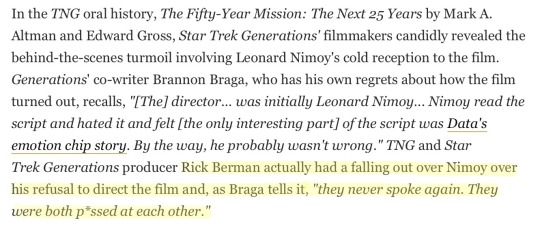

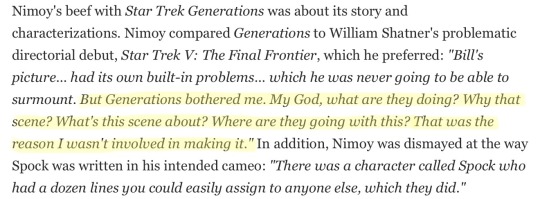
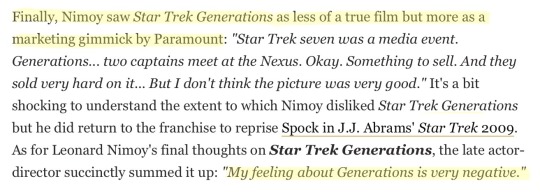
image id under read more!
[Image ID: text from the Screenrant article “Why Leonard Nimoy Hated Generations.”
In the TNG oral history, The Fifty-Year Mission: The Next 25 Years by Mark A. Altman and Edward Gross, Star Trek Generations' filmmakers candidly revealed the behind-the-scenes turmoil involving Leonard Nimoy's cold reception to the film. Generations' co-writer Brannon Braga, who has his own regrets about how the film turned out, recalls, "[The] director... was initially Leonard Nimoy... Nimoy read the script and hated it and felt [the only interesting part] of the script was Data's emotion chip story. By the way, he probably wasn't wrong." TNG and Star Trek Generations producer Rick Berman actually had a falling out over Nimoy over his refusal to direct the film and, as Braga tells it, "they never spoke again. They were both p*ssed at each other."
Nimoy's anger stemmed, in part, from the fact that as the intended director, he wasn't allowed a chance to rewrite Star Trek Generations' screenplay to address his issues. Berman, Braga, and co-writer Ronald D. Moore collaborated on Generations' script and Paramount "loved it" because the writers fulfilled the studio's many edicts as to what needed to be in the film. Only then was it brought to Nimoy, who was not pleased with what he read. Berman diplomatically recalls, "When Leonard read it, he said, 'This needs a page-one rewrite'. I told him [no]... and we parted ways." Berman also admitted, "It was unusual for us to write a script with no director involved at all. Mr. Nimoy is right that he probably should have had a pass at the script."
Nimoy's beef with Star Trek Generations was about its story and characterizations. Nimoy compared Generations to William Shatner's problematic directorial debut, Star Trek V: The Final Frontier, which he preferred: "Bill's picture... had its own built-in problems... which he was never going to be able to surmount. But Generations bothered me. My God, what are they doing? Why that scene? What's this scene about? Where are they going with this? That was the reason I wasn't involved in making it." In addition, Nimoy was dismayed at the way Spock was written in his intended cameo: "There was a character called Spock who had a dozen lines you could easily assign to anyone else, which they did."
Finally, Nimoy saw Star Trek Generations as less of a true film but more as a marketing gimmick by Paramount: "Star Trek seven was a media event. Generations... two captains meet at the Nexus. Okay. Something to sell. And they sold very hard on it... But I don't think the picture was very good." It's a bit shocking to understand the extent to which Nimoy disliked Star Trek Generations but he did return to the franchise to reprise Spock in J.J. Abrams' Star Trek 2009. As for Leonard Nimoy's final thoughts on Star Trek Generations, the late actor-director succinctly summed it up: "My feeling about Generations is very negative."]
#the drama of this all 🍵#imagine telling Leonard Nimoy no.#when he says that your story is inconsistent with the characters that he had developed for 30 years#on a show that you were never even a part of#there are issues w the movie aside from the fact that antonia feels like a last minute no homo... but#it sucks that they had established how kirk and spock were basically soulmates (romantic or not) for years#only for that to be pushed aside in the end#:(#generations#obvs it’s disappointing how it turned out#and i wish it would have been more interesting and that the tos crew got the ending they deserved#and it’s sad because you can tell how much it upset him#but his unapologetic hatred of it is very funny#s’chn t’gai spock#star trek generations#star trek#star trek tos#leonard nimoy#rick berman#my post
524 notes
·
View notes
Note
No, I've found Olivia's framing of the sex scenes quite uncomfortable and Florence did too, which is her right. There's nothing wrong with talking about them inherently, the issue is that she kept marketing the film around the idea of the sex scenes and them somehow being transformative when eating pussy is not the progressive act she seems to think it is, and the sex scenes are canonically sexual assault. So talking about them as if they are about "putting emphasis on female pleasure" is very odd when the context in which they are occurring is rape. Alice experiencing pleasure in that scene is only experiencing it because her partner forced her into a brain machine without her consent and is stimulating her without her consent. None of it is sexy or "come see this film because of how I chose to show pussy licking" material. It's just off base. The inclusion of it in the trailer was very deliberate and again, Florence seemed really uncomfortable with that and it should probably be worth noting if an employee feels sexualized by her employer inappropriately in order to sell a product. There's nothing wrong with the scene itself, but the fact that she chose to describe it in that frame feels very odd given the context and like she's deliberately pandering to people who want to see Florence in that position or Harry in that position in order to make the movie appealing, none of which is that likeable or really speaks to...anything the film is trying to be about. It's weird to say "I wanted an emphasis on female pleasure" in a film about a whole bunch of women being collectively raped and one driven to suicide.
Oh anon - I disagree with you in so many different ways, but I'm going to start at the end.
Is you argument that Olivia Wilde should not have intentions as a filmmaker to have an impact on the audience at one part of the film that are at odds with the narrative? Or just that she shouldn't talk about her intentions as a filmmaker to have an impact on the audience at one part of the film that are at odds with the narrative? Because both arguments are bizarre and show a complete lack of understanding of filmmaking.
One of the reasons my only response to that argument is 'what the fuck are you talking about?' is that having watched the movie I think it's clear that the director wanted to emphasise female pleasure in the sex scenes as part of a wider aim to make the world seem appealing. The film is only going to work for an audience if they're drawn into the world and the fantasy on one level.
To have so many people say 'it's fundamentally wrong for the director to talk about a reasonably clear and obvious part of her filmmaking process' makes absolutely no sense to me and saying it a lot in my inbox doesn't make it true.
You make up a lot of what you think is going on in your ask and then blame Olivia for it. You make up Olivia Wilde's intentions are (saying "eating pussy is not the progressive act she seems to think it is" shows a complete lack of understanding of either the movie or the interview). You're telling a lot of stories about how you think Florence Pugh feels and why.
There's something else as well about the way 'marketing' gets talked about (but only when it comes to Olivia Wilde). A director is not in charge of the way a film is marketed that's the responsibility of the studio. A director also does not control what bits of her interview get snipped out of context and breathlessly reproduced by the clickbait economy. To suggest things are wrong because they were part of 'marketing' - completely ignores what actually happened and what she actually did.
Olivia Wilde talked about part of her filmmaking process and intentions. The fact that so many people are prepared to present this as an exceptional outrage shows how utterly weird and unusual the response to this movie has been.
#So much of the discourse about DWD#seems to come at people who are pretending to be ignorant about everything to do with movie makingprocess#and have maybe never seen a movie before
5 notes
·
View notes
Note
so, this is more of a ramble than an ask (and pardon for my English if it's bad at times), and not directly related to BTS but seeing how much you love cinema...
I recently saw the Elvis movie and I have to say that I enjoyed quite a lot, have you watched it??. even if it was a little too long for me (two hours was enough, I don't know why now every movie in the cinema has to be 2 and a half hours) I liked the cinematography itself, it didn't tire me out like I thought it would, on the contrary, I find that the quick transitions in the beginning and drastic angles helped me immerse in the movie, and the end was slower and it fit. i enjoy Elvis music and already liked a lot of the other artists featured, and it was so cool to see his music inspirations represented. the way of narrating the story was also something different for me.
Something that I found really enlightening was the énfasis on how Elvis's fame shaped the modern music industry. I could be completely wrong with this, but it seems that the introduction of massive amounts of merchandising to the market was in part due to his manager, and when talking about both "I love elvis" and "I hate elvis" he said something along the lines of "if they are going to hate you anyways, at least let them spend money on it ", which I found quite interesting, although I don't really have the ability to elaborate much more in English, but I think that that is something evident(??) in today's music market.
(also, what is going on with Hollywood and biopics?? it seems that the only things Hollywood produces are 1 remakes, 2 sequels of supposedly finished sagas or 3 biopics.)
I guess this is all just a way for me to talk about the movie because I have been unable to do so with anyone else, and also to ask about
your opinion on the role of merchandising in today's music industry and, if it's pertinent, in relation to BTS and the loop industry specifically
* also, you may have watched it and thought that it was bad and really boring, like my brother thinks, and then I guess we will just agree to disagree, or maybe you haven't watched and have no clue what I'm talking about. anyways sorry for the long ask for a simple question and thank you for your pacience
Hi anon!
I hadn't watched the film when you originally sent this ask a week ago, but I did my homework specifically for this. I don't have strong opinions on it, I thought it was okay-ish for a Hollywood biopic. Not the worst boring film ever, but certainly not the best. In this case, 2 hours would have been enough. It didn't drag, but I also felt that it wasn't worth it for 2h and 40 min. My main issue is this type of biopic that I call informational. I think it can be way more interesting if a filmmaker would focus on a specific time period, or an event and build a story around that. In this case, Elvis's residency in Las Vegas. We don't need to have an entire timeline of his life. We can all get that information. It's more interesting to just choose one major event and pick it apart.
As to the merchandise business, I had no idea Colonel Parker was the one who started it for Elvis. The line ''íf they are going to hate you anyway, at least let them spend money on it'' just shows how music is very much a business. For those who want to get big, make a living out of it (not just the label, the managers, but the artists themselves), artistry, creativity that only pertains to the music side of things will never be enough. Selling products that have the band or artist brand is a sure way of making a lot of money. Music turns into a commodity as well and buying merchandise is part of the fans' music consumption habits. Think of the Elvis example, or The Beatles who came right after him. They brought some really big changes to the relationship between musicians and their fans. And because the musician becomes this object of adoration, but untouchable at the same time, merchandise became one way of feeling connected. Yes, it takes a lot of money out of the pockets, but at least the fan feels satisfied for having that t-shirt.
Merchandise became a lot of more important with the transition to digital. Of course people don't buy physical albums as much as they used to in the past. The biggest cash comes from selling merchandise and concert tickets. So it was no surprise that during the pandemic there was an uptick in BTS merchandise and related products advertised a lot more. They money had to come from somewhere. First of all, the label makes the biggest revenue, not the artist. They usually get a certain procent out of it.
As much as merchandise is a big part of turning music into a commodity, it also helps artists in making money, especially given the current landscape. It's not something that I would judge per se. But it does raises some questions, at least to me, when there is a lot of focus on merchandise and advertising other products, while music takes a step way in the back. These two aspects of the industry should complement each other.
Here are some additional sources if you're interested in reading more about this. There's also a documentary coming out called Merch! which raised my interest.
3 notes
·
View notes
Text
Film Review - Misteri Dilaila by Syafiq Yusof
Misteri Dilaila is a Malaysian horror thriller film that went viral in 2019. I rarely watch Malaysian films because when i do, it’s usually the same plot all over again. Drama, romance, action, comedy and everyone’s favourite, Horror. I feel like these genres are the usuals everywhere but what makes it unbearable for most of us Malaysians is how similar every story is. Rich boy meets a poor girl. Rich boy falls in love with her and when they get married the mother hates the poor girl. They fight and one day someone dies and the end. For horror, it’s just about some people getting haunted by a ghost that was sent by a close friend of theirs.

The thing I understand about the horror hype for Malaysians is how our culture is deeply rooted with mystical beliefs and as religious as we tend to be, ghost stories seem to intertwine with our faith for countless years. Personally, I believe in Asian ghosts more than the western versions. This is probably due to my own family having our fair share of sights into the world of the undead.
The reason why I chose to talk about this film is because of how disappointed I felt when I watched it. Unlike most Malaysian films, it had the potential to be a great one. The look of the film was far better than the usual ones we got and the story building had a Gone Girl vibe. What made me disappointed was the fact that while watching that film I was hopeful and excited thinking finally a Malaysian Filmmaker is making a psychological horror instead of those in your face jump scares.

The story is about a married couple, Jefri and Dilaila, who were spending their holiday together at a luxury vacation home in Fraser’s Hill. After a petty issue where they end up quarrelling at each other, Jefri discovers his wife went missing the following morning. Next thing he knows, a mysterious woman who also goes by the name of Dilaila shows up one night where she claims to be his wife. Adding more confusion is the supernatural occurrences that regularly haunts Jefri whenever he’s alone in the house.

Throughout the whole film, I was at the edge of my seat thinking that there’s finally a malaysian filmmaker that is about to introduce a character with a mental illness as the protagonist which would’ve justified his hallucinations of the ghost. Unfortunately, it was just like other films where there’s no actual context to the sightings, they were just ghosts being ghosts and haunting him for no reason. Well that’s for the 2nd version of the film.
Another fun fact about this film is that it went viral due to the alternate endings it has. When the film came out in the cinemas, people were surprised to hear that they had different endings when they discussed it with their friends. This was purely the filmmaker and his team’s intention. Different halls have different endings and this was meant to be a surprise for the audiences. It was a great marketing strategy and considered as a genius way of thinking for some people while some were mad that they were being ripped off.
*SPOILERS AHEAD*
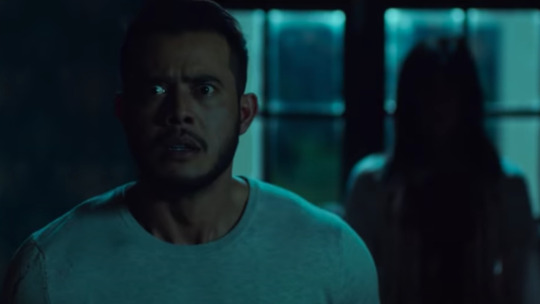
As a person that watched both versions, I was unsatisfied with both versions as both endings angered me. Nevertheless, I didn’t think it’s an absolute flop though. Both versions have the fair share of plot twists. The first version revealed that the protagonist we thought all along was the actual antagonist. He was the one that killed his own wife whilst every supporting character was a part of the police team that were acting to make him confess to his wrong doings. It was then stated that the hallucinations he got was a result of his guilt and him being under the influence of drugs all along.

The second version on the other hand is more mystical. The ghosts made more appearances in this version. The protagonist is still the good guy but the inspector that was involved in the case turned out to be a fake policeman and he was working with the imposter Dilaila. Towards the end, Jef found out that his wife has been dead a long time ago and the ‘wife’ he was holding turns out to be something else (this we never see on screen though).
Personally if i were to choose an ending, I would choose the 1st version as it makes more sense logically but I can understand why people love the 2nd Version. Malaysians and their thirst for horror films explains the statistics. But a famous film reviewer on YouTube (ZhafVlogs) once made an instagram poll and asked his subscribers to choose between the two versions and surprisingly it was a tie. This proves that the director made the right decision to come up with alternate endings.
*END OF SPOILERS*

The film then landed in a controversy within the next few weeks after the premiere. Someone noticed that the story was awfully familiar. It was then proven that the story was 90% similar to a few films from India, America, Russia and more. People were comparing it to a film called “Vanishing Act” and they were right.


As a film student, I am aware about the concept of adaptation so I personally see no wrong in the filmmaker’s act. However, I can understand why people are mad. The filmmaker went silent once news got out about him “stealing” the idea and “claiming” the story as his. But based on my research, I never found him claiming the story as his before. Although, he also never mentioned about him making a remake of the initial film as well. The filmmaker went silent for a long time and people kept sending him hate comments but soon died after a few months.
A year later, the issue was raised yet again by someone and this caused the filmmaker to finally speak up. He explains the concept of adaptation and how he was inspired by a scriptwriting book called Save The Cat which said that “A good artist copy, but a great artist steals”. He also states about there being so many films abroad that have the similar concept to an older film such as Fast and Furious with Point Break, Avatar with Pocahontas and Inception with Paprika. He finally came clean and stated that he was inspired by a stage play from France called “A Trap for a Lonely Man”. He then added his own twist by adding some horror elements knowing that it being the target audience favourite genre.
Also regarding the quote from Save The Cat, (in my opinion) I feel like what the author was implying is about ‘stealing’ stories from life. Not stealing the exact plot codes from other films. This is based on my understanding from the phrase which I assume Syafiq may have misinterpreted it.
He raised logical points from a filmmaker’s perspective and he also raised some issues about being pressured from his father (Yusof Haslam) and brother (Syamsul Yusof) who were well known filmmakers as well. He said that everyone kept on telling him to be better than his father and brother. Sadly, when he was at his lowest, even his family turned their backs on him and said that it’s fully his fault.
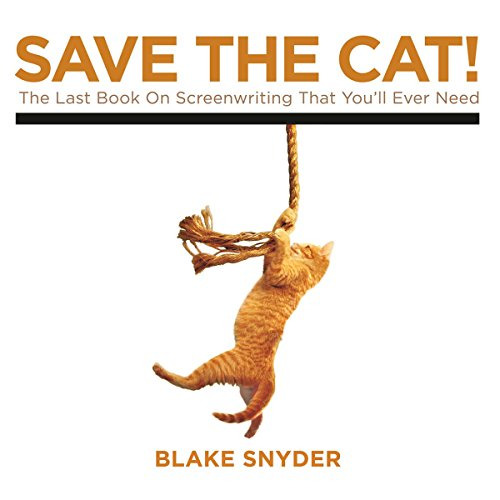
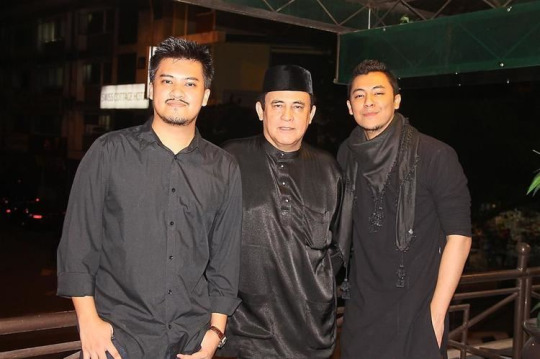
From my point of view, I was initially furious with him for not being able to defend himself by explaining about the adaptation because I feel like most Malaysian audiences are unaware about it. People assume adaptation is from book to film when it's more than that. I, myself, learnt that from film school. And I’m not entirely defending him as well, I’m still disappointed in him for not speaking up sooner. But I do empathise with him as well. The audience were quick to attack him. The film industry in Malaysia is not entirely in the best state for these past few years. So a film like Misteri Dilaila made everyone hopeful for more quality films like it only to be betrayed at the end when they found out that it wasn’t his own creative idea and a total rip off. I still feel like he did a good job with his visuals which was an improvement from the local films around that time.
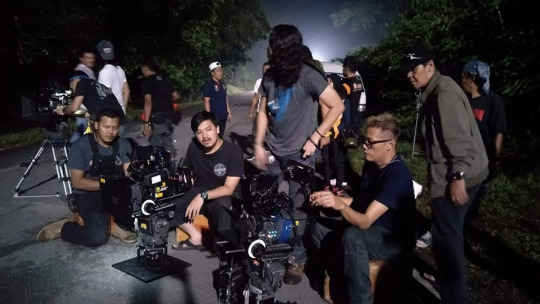
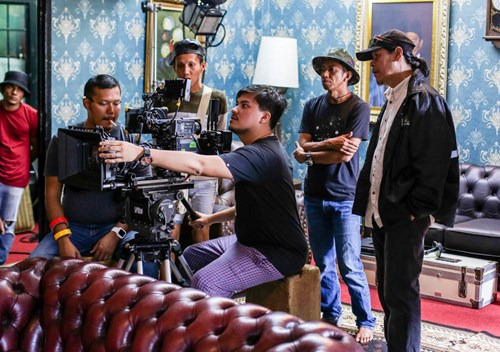
Reading through the whole issue and looking at how this decision to “copy” the plot codes as he was inspired from the Save The Cat book has opened my eyes. As a filmmaker, I feel like i should always do research before starting on a project and the best thing is to always be honest with our intentions. If it’s inspired by a remake, then set it straight and give credit to the original piece. Don’t keep it to yourself. It is terrifying though, being in his state where everyone turned their backs on him, even his own family. He released a few films after that, saying that film is his job and that it is his source of income so as much as it may seem hard sometimes, life still goes on. Sadly, he received a lot of backlash and people lost their faith in him. People were being sarcastic and teasing him if the film was even his.Seeing that happened to him opened my eyes. People may let it slide but they’ll never forget. Once you screw up, people will remember and use it against you.
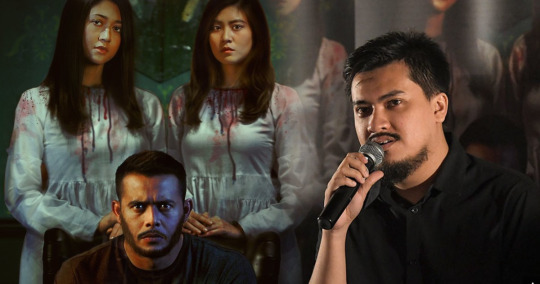
Pictures of the set:


Links to Film Reviews:
A Non-Horror Fan's Guide To Watching 'Misteri Dilaila'
https://rojakdaily.com/entertainment/article/6414/a-non-horror-fan-s-guide-to-watching-misteri-dilaila
Misteri Dilaila (2019) Review
https://www.caseymoviemania.com/2019/02/misteri-dilaila-2019-review/
Movie review: Misteri Dilaila
https://www.thesundaily.my/style-life/reviews/movie-review-misteri-dilaila-DJ649603
Link to news about the controversy :
Is Local Horror Film ‘Misteri Dilaila’ a Rip Off? Here’s What The Director Had To Say..
https://juiceonline.com/is-local-horror-film-misteri-dilaila-a-rip-off-heres-what-the-director-had-to-say/
Horror fans slam ‘Misteri Dilaila’ for ripping off Hollywood film ‘Vanishing Act’
https://www.malaymail.com/news/showbiz/2019/03/05/horror-fans-slam-misteri-dilaila-for-ripping-off-hollywood-film-vanishing-a/1729154
Clarification/Statement by the Director about the issue (in Malay);
https://www.facebook.com/photo?fbid=649749852534594&set=pcb.649750949201151
1 note
·
View note
Text
Blu-ray Review: Amityville: The Cursed Collection
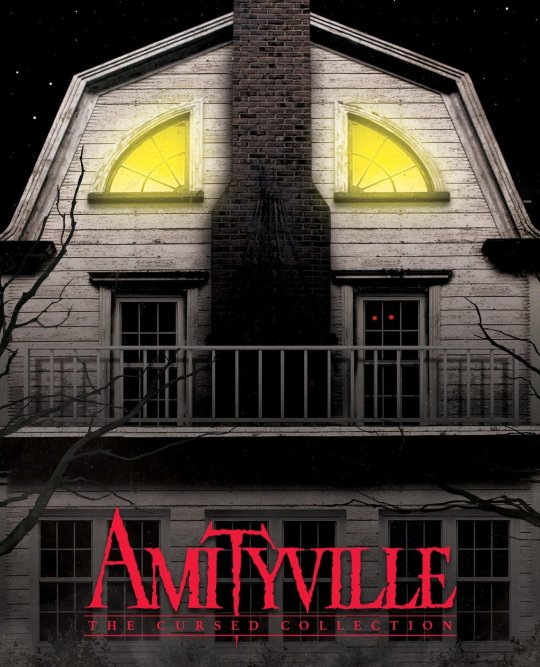
After the original trilogy, The Amityville Horror's storyline had run its course, as had its theatrical viability. The 1979 original is an iconic adaptation of Jay Anson’s allegedly true book. 1982's Amityville II: The Possession is a successful prequel that shows the murders that led to the house being haunted. 1983's Amityville 3-D rested its laurels on the 3D gimmick for a largely dull entry.
This would spell the end for most franchises (at least until the remake boom), but once the home video industry blossomed, the marketable title was revived for a spate of direct-to-video sequels. While the initial source material had been tapped, four of these later efforts borrowed a concept from John G. Jones' 1988 short story collection, Amityville: The Evil Escapes, in which cursed objects from the original house find their way into unsuspecting peoples' lives.
Vinegar Syndrome has collected the pseudo-quadrilogy of 1989's Amityville: The Evil Escapes, 1992's Amityville: It’s About Time, 1993's Amityville: A New Generation, and 1996's Amityville Dollhouse - the fourth, sixth, seventh, and eighth installments in the franchise, respectively - in a Blu-ray box set dubbed Amityville: The Cursed Collection. (The absent fifth entry, 1990's The Amityville Curse, is an unrelated Canadian production that remains out of print due to rights issues.)

Amityville: The Evil Escapes was made for television but features decent production value, including a strong opening with a rain storm and a fairly convincing facade of the original Amityville house at 112 Ocean Avenue. The Amityville Horror screenwriter Sandor Stern returned to write and direct the followup. While having one of the original creative forces at the helm is a good omen, his effort is light on scares.
The film follows Nancy Evans (Patty Duke, Valley of the Dolls) and her three children. The untimely death of Nancy's husband has put a financial burden on the family, forcing them to move to rural California to live with her mother, Alice (Jane Wyatt, Star Trek), who recently received an antique lamp from the Amityville house. The 300-year-old evil is attached to the lamp and then transmigrates to the most vulnerable person in the house: the grieving youngest child, Jessica (Brandy Gold), who communicates with her late father.
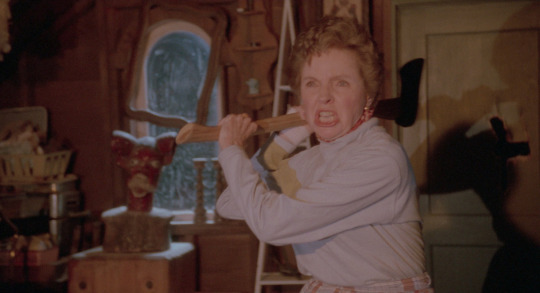
The familial melodrama is akin to a Lifetime movie, while a series of strange occurrences in the house causes further tension between its inhabitants. Naturally, the cursed lamp lights up whenever something happens. The ridiculous plot lends itself to a few entertaining set pieces, including a possessed chainsaw and a garbage disposal gone wrong. The gore in the latter scene was absent from the TV broadcast but was added for the home video release and remains intact on Blu-ray.
Duke is probably a little too old for her role, but she's good in it. The kids don't fare as well, but what's asked of them is fairly minimal. The cast also includes Fredric Lehne (Supernatural) and Norman Lloyd (Saboteur) as a pair of priests from Amityville, Aron Eisenberg (Star Trek: Deep Space Nine) as Nancy's son, and Peggy McCay (Days of Our Lives) as Alice's sister, who sets the story into motion by gifting her the lamp.
Amityville: The Evil Escapes's Blu-ray disc includes new interviews with Stern and cinematographer Tom Richmond (House of 1000 Corpses, Chopping Mall). Stern's conversation is an informative one, but the most interesting fact is that he had no idea more sequels were made after this one. Richmond details how he felt more like the lighting manager than the director of photographer, as Stern was more experienced and knew what he wanted.

Amityville: It’s About Time is directed by Tony Randel (Hellbound: Hellraiser II) and written by Christopher DeFaria (who went on to executive produce the likes of Mad Max: Fury Road, Gravity, and Ready Player One) and Antonio Toro. Its subtitle is not just a clever clock pun; the movie deals with time in rather interesting, if sometimes nonsensical, ways - including time shifts. The name also works in a metaphorical sense, as the core of the picture is about a character struggling to break the cycle of making the same mistakes.
In the film, the Amityville house has been torn down and replaced with a new development, but architect Jacob Sterling (Stephen Macht, The Monster Squad) helped himself to a antique clock. He brings it home to suburban California, where his ex-girlfriend, Andrea (Shawn Weatherly, Police Academy 3: Back in Training), is watching his two teenage kids, Rusty (Damon Martin, Ghoulies II) and Lisa (Megan Ward, Encino Man). The clock physically roots itself into their home and begins controlling the family members.
Rusty - who's depicted as a "troubled" kid in a very '90s way, complete with black clothing, an earring, and heavy metal music - recognizes that there is an evil presence, but everyone else blames him for the weird happenings in the neighborhood. While he's at the center of it, the plot successfully integrates the entire household, unlike the previous film, and the complicated family dynamic is a welcome shakeup of the formula.
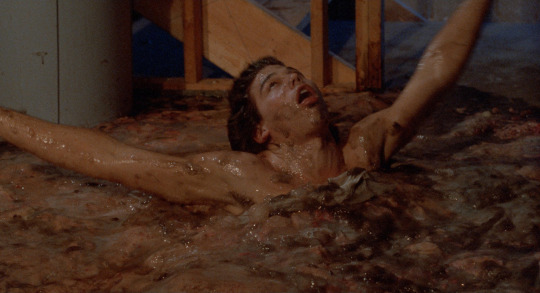
Playing more like an ensemble than any other Amityville, each cast member is able to pull their own weight. Macht's role is fairly thankless, as a dog attack leaves him in failing health, but he fully commits. Jonathan Penner (Survivor) gives a charismatic performance as Andrea's pretentious psychologist boyfriend, and Nita Talbot (Hogan's Heroes), Terrie Snell (Home Alone), and Dick Miller (Gremlins) are among the neighbors who pop up.
If not for the tenuous connection to the Amityville Horror franchise, I suspect this picture might have more of a cult following. (It's easier for word-of-mouth to spread about a lone gem than the sixth entry in a direct-to-video franchise.) The most entertaining film in the set, It's About Time is a charming, if unspectacular, B-movie with a delightfully silly plot and several fun moments featuring special effects by KNB EFX Group (From Dusk Till Dawn, Scream), the most memorable of which sees a character melting into the floor.
Amityville: It’s About Time's Blu-ray disc includes new interviews with Randel and DeFaria. Randel seems to relish the opportunity to discuss the film, as he says no one ever asks about it, and praises the cast and crew. DeFaria explains that he offered to write the film as a way to get his foot in the door as a producer - which, looking at his post-Amityville resume, seems to have worked out for him.
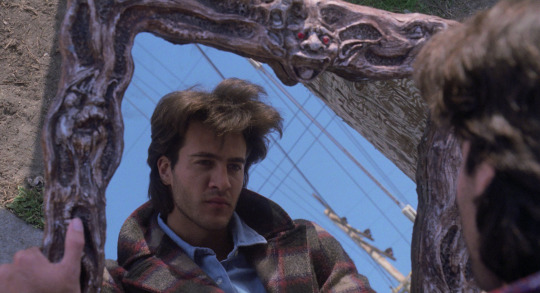
Amityville: A New Generation eschews the franchise's traditional, suburban family dynamic in favor of a metaphorical one; a community of artists living in an urban loft co-opt. It focuses on Keyes Terry (Ross Partridge, Stranger Things), a struggling photographer who's struck with inspiration when a homeless man gives him an ornate mirror that has been in his family for generations. The mirror predicts the death of its first victim, which would be an interesting enough concept, but alas it is not consistent. Ultimately, the possessed object tempts Keyes to commit murder.
The film boasts a powerful supporting cast that includes David Naughton (An American Werewolf in London) as the landlord, Terry O'Quinn (Lost) as a detective, Richard Roundtree (Shaft) as one of the artists, Robert Rusler (A Nightmare on Elm Street 2: Freddy's Revenge) as a disgruntled ex-boyfriend, and a particularly charming Lin Shaye (Insidious) as a mental hospital nurse. Although the cast elevates the material, the script - penned by a returning DeFaria and Toro - remains lackluster.

While the previous entries did an admirable job to overcome their limited resources, A New Generation looks and feels very much like a '90s direct-to-video movie; THE of the same caliber as the endless Children of the Corn, Hellraiser, and The Prophecy sequels that were being churned out around the same time. Despite a direct connection to the Amityville mythology beyond the mirror, it hardly even feels like an Amityville movie.
Directed by John Murlowski (Santa with Muscles) made the inspired choice to hire The Amityville Horror visual effects artist William Cruse to handle the elaborate mirror effects. They're all accomplished in camera; an impressive feat that sounds great in theory but looks campy in practice. The film also features cinematography by future Academy Award winner Wally Pfister (Inception, The Dark Knight).
Amityville: A New Generation's disc includes new interviews with Murlowski and DeFari, plus a commentary by Murlowski. Murlowski's chat includes a breakdown of the analog effects, supplemented by behind-the-scenes footage. His commentary allows him to go more in depth, citing The Shining as an inspiration, pointing out the similarities to Oculus, and addressing shortcomings such as the pacing and the rubber monster. DeFari discusses the challenges of channeling artists' fears on screen and offers advice for aspiring filmmakers.
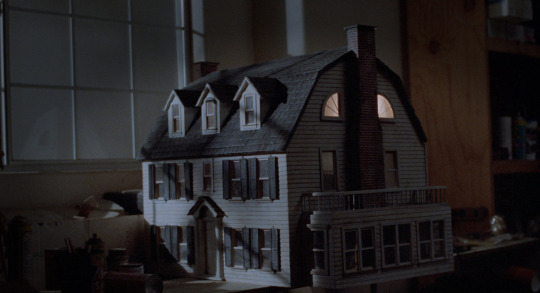
Amityville Dollhouse is perhaps the most traditional of the bunch in terms of concept, though its execution goes in a different direction. In it, a newly blended family moves into a house that the contractor father, Bill Martin (Robin Thomas, Summer School), built on the original Amityville lot. Bill finds an old dollhouse - a miniature model of the Amityville abode, naturally - and gives it to his young daughter. While the girl ostensibly releases the evil, the strange occurrences begin before she receives the gift.
The eerie events start small but escalate to the point where the family's younger boy sees his deceased father, urging him to murder his family. The father appears in three stages of decay, a la Jack in An American Werewolf in London. His ultimate form is something like a cross between Tales from the Crypt's Crypt Keeper and Friday the 13th Part VII's Jason Voorhees, but he's too loquacious to be scary, delivering a few Freddy Krueger-esque quips.
While the deceased father feels a bit out of place in an Amityville movie, he is the highlight of the film, thanks to exceptional makeup by SOTA Effects' Roy Knyrim (The Toxic Avenger Part II & III). Also notable is an appearance by a young Lisa Robin Kelly (That '70s Show). The film marks the lone directorial effort of Steve White, who executive produced all four films in the set, along with The Devil’s Advocate and Halloweentown. Joshua Michael Stern (director of Jobs) penned the script.

Amityville Dollhouse's disc includes new interviews with White, Knyrim, and director of photography Thomas L. Callaway (Feast, Slumber Party Massacre II), along with alternate footage from the TV edit. White, having produced the prior three films, offers an interesting perspective. Knyrim discusses the progression of the dead father's makeup and how existing creature parts were repurposed for demons in the climax. Callaway breaks down a few interesting techniques, like a 360-degree shot with a periscope lens and the challenges of lighting a character covered in latex.
The perfect companion to Scream Factory's The Amityville Horror Trilogy set, Amityville: The Cursed Collection is available exclusively from Vinegar Syndrome. It's not as loaded with extras as some of the company's releases (there's no input from any cast members and only one commentary), but each movie offers at least a couple of new interviews. All four films have been newly restored in 4K from their 35mm original camera negatives, so they look better than they ever have. Each disc is in its own Blu-ray case with reversible artwork, all packaged in a slipcase box designed by Earl Kessler Jr., which is limited to 4,000.
Amityville: The Cursed Collection is available now from Vinegar Syndrome.
#the amityville horror#amityville horror#amityville#amityville: it's about time#vinegar syndrome#amityville: the evil escapes#amityville: a new generation#review#article#dvd#gift#lin shaye#david naughton#terry o'quinn#dick miller#patty duke#richard roundtree#robert rusler#stephen macht
12 notes
·
View notes
Photo
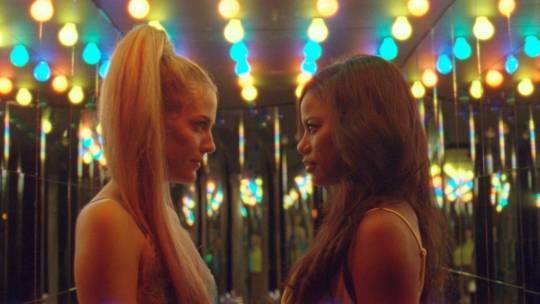
Sundance 2020.
“Dude, I hope this gets over 3.5!” Letterboxd rates this year’s Sundance.
Our West Coast editor Dominic Corry returns to Sundance to engage in such essential festival experiences as: judging other people’s cellphone etiquette, pretending not to notice A-listers, coming to rely upon coffee to a dangerous extent, and hastily downing a hot sandwich while standing over the garbage can outside the Park City Fresh Market.
He also watched a whole load of cool films, and spoke with the writing and directing talent behind some of the 2020 festival’s most talked-about premieres: Janicza Bravo (Zola), Eugene Kotlyarenko (Spree), Miranda July (Kajillionaire), Brandon Cronenberg (Possessor) and Jim Cummings (actor and executive producer of Danny Madden's debut Beast Beast).
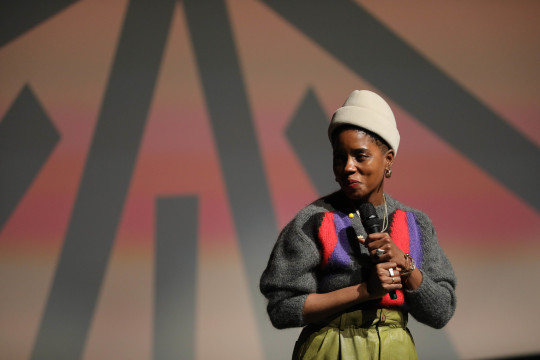
Zola
“There are more ways to access great storytelling than the ones we’ve been used to.”
Generating much of the buzz ahead of the 2020 Sundance Film Festival was Janicza Bravo’s Zola, a film based on the Twitter thread by A'Ziah King that went famously viral in 2015. It concerns two exotic dancers: King herself—who goes by Zola—(played by Taylour Paige) and her new friend Stefani (Riley Keough), who head down to Tampa one weekend accompanied by Stefani’s boyfriend Derrek (played by Cousin Greg himself, Nicholas Braun) and Stefani’s “roommate” (read: pimp, played by Colman Domingo). To say shit gets cray doesn’t quite cover it.
It’s been simplistically, if understandably, described ahead of time as “Pulp Fiction meets Spring Breakers”, but Bravo herself cited a much more eclectic selection of cinematic inspirations when we spoke to her ahead of the film’s world premiere.
“My inspirations were The Wiz, Coffy, Paris Is Burning, The Killing of a Chinese Bookie, Special Victims Unit. And Natural Born Killers!”
Bravo (pictured above) took to King’s Twitter thread immediately when it went viral. “I think I found it within a day, or days, of it coming out,” says Bravo. “It was sent to me by a group of girlfriends and before finishing it I knew that I wanted it, and I worked at getting [the rights] for about two years.”
Bravo wasn’t the only one who wanted to tell this story on the big screen—James Franco was initially linked to an adaptation.
“It’s not that it was difficult to get the rights, it’s that there were many other people who wanted it and the people who got it before me were just fancier. But here we are.”
Bravo is credited with Zola's script alongside playwright Jeremy O. Harris, who recently blew up Broadway with his incendiary show Slave Play. She concedes there were unique challenges in translating something so specific to the big screen.
“The thing that everyone was attracted to about this story was the voice, and I would say the hardest thing was to make sure the voice was still present in the film. What you’re reading, that it would translate into the visual.”
Bravo says she’s not sure if this is going to lead to a rash of social network-based films (Letterboxd: The Movie excepted of course), “but I would say that what the story tells you is that there are more ways to access great storytelling than the ones we’ve been used to.”
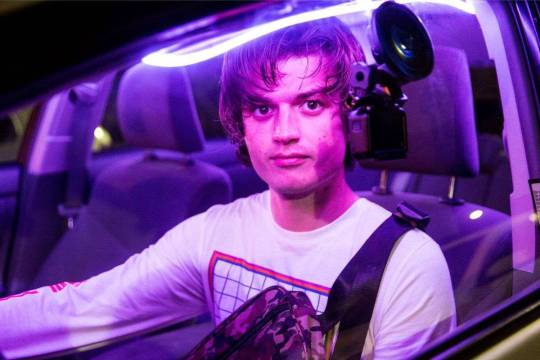
Spree
“Put it on lists and do those Letterboxd battles!”
It can be all too easy to over-perceive mini-trends at film festivals, but it was hard to overlook the large role that social media played in multiple films at Sundance this year.
In Eugene Kotlyarenko’s Spree, floppy-haired Stranger Things star Joe Keery (pictured above) plays wannabe influencer Kurt Kunkle, a driver for a Los Angeles-based ride-sharing service (called… Spree) who plots to up his subscriber numbers by murdering his more obnoxious passengers on a live stream. Or he might just be staging it all for the LOLs. The entire film plays out as a series of live-streaming videos, mostly from the dashboard cameras in Kurt’s car.
Kotlyarenko’s film questions the overly prominent role of social media in modern life. “We've all kind of signed on to this thing, to use the literal expression,” he told us. “It’s part of the way we understand ourselves and our relationship with the rest of the world. It’s basically: a like or repost or a good rating on something, gives us part of our validation or sense of self and that is a kind of twisted place to be. [Spree] is a provocation, it’s a challenge, it’s a way of saying: look, we have a problem.”
Kotlyarenko had a number of inspirations in mind while he was writing and directing Spree. “A lot! A lot of movies! I actually put ten movies in a Dropbox for the cast and crew. One movie that I thought was really inspiring was Jafar Panafi’s Taxi, also known as Taxi Tehran. You want Man Bites Dog in there, because the whole thing is that the movie’s a live stream, right? So how do you do that pseudo-doc thing but now? So you’re following a psychotic character and you’re getting very close to them. Uncomfortably close. What else? Network and To Die For, just hardcore media satires. There’s a bunch of other films, like Coming Apart, do you know this film? It’s a late ’60s movie starring Rip Torn, where he’s a psychiatrist and he sets up these hidden cameras and exploits all his patients and stuff but they don’t know that they’re on camera.”
It turns out Kotlyarenko is a keen Letterboxd member, and he’s looking forward to other members generating an average rating for his film. “Dude, I hope this gets over 3.5!”
We can safely assume Kotlyarenko won’t employ measures as drastic as those adopted by the main character in his movie in order to get his desired rating.
“I want people on Letterboxd to watch the film and rate it whatever the fuck you think it is [worth]. And, you know, put it on lists and do those Letterboxd battles. Put it up against, you know, some Gasper Noé movie. And let it win!”
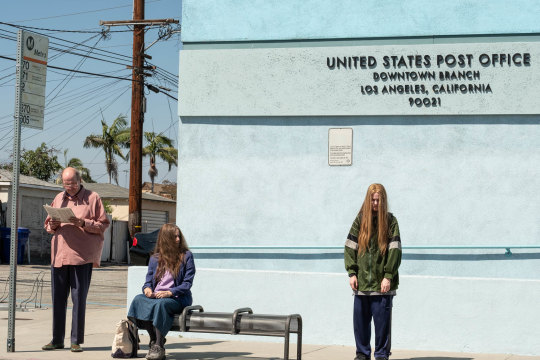
Kajillionaire
“Instead of sort of half-arseing two jobs, you’re doing one job really well.”
Filmmaker, actor and performance artist Miranda July is a central figure in the American independent cinema scene, even though she’s only directed two films: Me and You and Everyone We Know and The Future. Her third full-length feature Kajillionaire had its world premiere at Sundance this year, just as her previous works did, but the big difference this time around is that she stuck to writing and directing, having also played the lead role in her two previous films.
“It’s just better,” she told Letterboxd of staying behind the camera for Kajillionaire. “Instead of sort of half-arseing two jobs, you’re doing one job really well, you know? You get a lot of energy when you’re performing—that’s nice. Especially initially to kind of set the tone, that was super helpful, starting out. But now it’s like: these people all knew my work. So I didn’t have to actually be in it for them to like, get it. Which is, you know, what a dream right?”
Kajillionaire is a typically (for July) offbeat tale of a Los Angeles family who attempt low-level scams to raise money to pay the rent on the disused office space with oozing walls in which they live. The family (comprised of mom Debra Winger, dad Richard Jenkins and daughter Evan Rachel Wood) find their equilibrium challenged when an optimistic young woman (Gina Rodriguez) eagerly joins them for their latest “heist”.
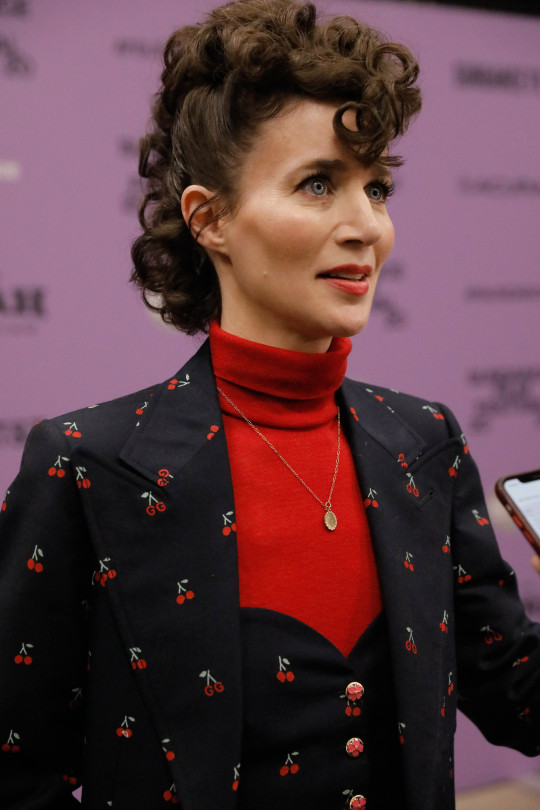
Miranda July. / Photo courtesy of the Sundance Institute
Letterboxd asked July if she thinks there’s a common narrative thread running through all three of her films.
“I mean, I see the thread, but it’s really just me living my life. Not that it’s autobiographical at all. But now I was ready to face issues and tell a story that only could be told by someone who had been a child, grown into an adult, and then been a parent of a child and had this 360-degree perspective. And also I think there’s a joyfulness that only comes in once you’re like: I know a little bit how to do this, you know? Like, maybe there’s some fun that I had, as well as breaking my heart 100 times.”
Although Kajillionaire would seem to speak to general economic anxiety, July said that wasn’t necessarily the point of the film.
“All I’ll say about that right now is: I wrote it in this time and the whole thing comes from my unconscious. But I am the child of boomers and, you know, living in the same world you’re living in. The sense that something criminal might have happened is in the air, but I wasn’t consciously [thinking]: ‘I’m going to hit them hard with this political satire’. It’s not that movie. But I don’t think anyone would be wrong to find that in it.”

Beast Beast
“It allows you to circumvent all of the bullshit that is Hollywood.”
We met up with one of our favorite filmmakers (and Letterboxd member), Jim Cummings, who wrote, directed and starred in the 2018 low-key masterpiece Thunder Road, an expansion of a 13-minute short that won the Short Film Grand Jury Prize at Sundance in 2016.
Cummings was at the 2020 festival as both an executive producer and supporting cast member in a film in the NEXT program (which highlights emerging filmmakers) called Beast Beast. It’s the first feature from writer/director Danny Madden.
“Danny was my co-producer and creative director on many of my short films, the Thunder Road feature, and my new upcoming werewolf movie. So it’s great to be here for his first Sundance feature.”
Cummings, who also runs The Short to Feature Lab in Malibu, understands more than most how shorts can be a pathway to feature filmmaking.
“It’s just so much more fulfilling to make something as a proven concept. You kind of become your own studio in a way that’s incredibly fulfilling. I think it’s the future. You can afford to make something over a weekend with your friends in the backyard that’s a short film and then you can use that and use Kickstarter or a crowd-equity plan campaign to raise the rest of the money for a feature. It’s absolutely the future and it allows you to circumvent all of the bullshit that is Hollywood.”
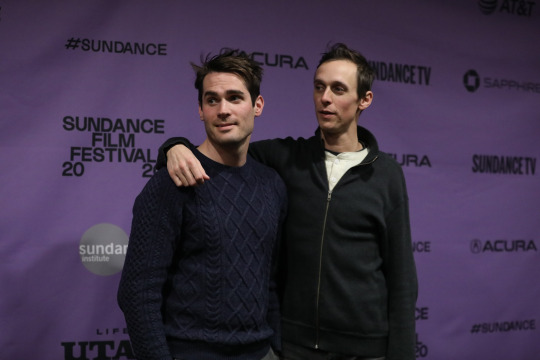
Jim Cummings and Danny Madden. / Photo by Jovelle Tamayo, courtesy of the Sundance Institute
Hang on, did you say new upcoming werewolf film? Thunder Road fans can look forward to beholding Cumming’ follow-up feature soon.
“I shot a werewolf movie in Coalville, Utah last March. I spent four months out here. I wrote it, I directed in and I star in it, and it’s a proper monster movie. It’s like a proper werewolf comedy. It’s like Thunder Road with a werewolf. Or Zodiac as a comedy. That’s coming out in theaters in September.”
And because this is Jim Cummings we’re talking to, there’s more: “I ran a crowd-equity campaign for a movie that we made about talent agents that I can’t really talk too much about, but it’s very good and it’s a horror movie that we shot in November. That should be coming out around the same time.”

Possessor
“It has a lot to do with character psychology, without giving too much away.”
Following the world premiere of his new film Possessor, Letterboxd sat down with second-generation filmmaker Brandon Cronenberg, the son of legendary director David. The younger Cronenberg’s second feature (following 2012’s Antiviral) had Sundance audiences audibly wincing at the extreme body horror on display in the sci-fi thriller, which stars Andrea Riseborough as an assassin who forcibly inhabits the minds of others to perform her incredibly violent executions.
We asked Cronenberg how he feels about the term “body horror” (a sub-genre often associated with his father’s work) being applied to his film.
“I guess it depends how you define body horror,” says Cronenberg. “There are violent scenes in the film and I guess that fits into a certain aspect of body horror, but it isn’t really what I would necessarily describe as body horror. There’s a small amount of story stuff that I feel is legitimately a part of that genre, but it’s not [the] prime aspect of the story.”
Cronenberg confirmed that on-screen viscerality appeals to him in general as a filmmaker: “I think especially in genre, although it can be incredibly conceptual. It’s partly defined by deep visceral emotions, not always because of graphic violence or gore. Sometimes it can be a film primarily about dread or anxiety that I would still consider to be a horror film, and a lot of classic ghost films for instance are not graphic but are visceral and in that emotional sense.”

Actors Christopher Abbott and Andrea Riseborough with director Brandon Cronenberg. / Photo courtesy of the Sundance Institute
The violence in Possessor may have had audience members covering their eyes in Park City, but Cronenberg told us there was a point to all the grue.
“It wasn’t just there to be intense or to provoke people. It has a lot to do with character psychology, without giving too much away. The way it’s depicted and the various approaches that are taken in different scenes, very much relate to the main character, her relationship with violence, her own internal space and also where the audience is situated from a kind of more objective or more subjective position.”
#sundance#sundance fim festival#sundance 2020#jim cummings#miranda july#letterboxd#red carpet#film festival#preview#festival
7 notes
·
View notes
Text
Here’s my much more controversial take on the nature of Harry Potter criticism (hatred), and how it’s come to affect the Fantastic Beasts series.
As I’ve said, I noticed something particularly forced about the nature of the negativity surrounding FB1 back in 2016 - forced hit-pieces that criticize the film but apparently barely comprehended it...regurgitations of the plot not accurately depicting the film at all, showing a lack of attention and active listening among certain audience members. It was insulting, and people kept on looking for excuses to consider the film a disappointment despite the good reviews from the audience and fans, and the good box office performance, not to mention the esteemed accolades from the Academy and BAFTA.
The criticism for FB2 seems motivated by personal feelings based on certain plot points, the same lack of active listening and a determination to blame the film for your lack of superficial enjoyment or comprehension, and determined negativity in the face of completely unwarranted controversy and a bro-y, anti-intelligent rejection of the complexity and thematic maturity of the story. And the latter part is something Harry Potter has always struggled with.
People don’t like dark, thoughtful films in the US. Everything either has to have tons of action and/or tons of humor. Blockbuster four-quadrants even in the eyes of critics, “shouldn’t take themselves too seriously”...and when they do, that’s grounds for panning? For vicious insults? And insinuations that, in fact, it isn’t the film that’s too cerebral for them. It’s the audience that is too cerebral for the film.
But dare you express this sentiment, and you’re simply met with exclamations of “pretentiousness!” and arrogance...which is, of course, ironic and hypocritical.
My point is, I don’t want to see Rowling sell out. Of course there’s allowed to be difference in opinion and we should consider the flaws of every piece, but the Fantastic Beasts films arrived with a seething, unwarranted, determined underbelly of hatred to begin with, and that makes it hard to stomach some of the “criticism” it’s faced and consider it legitimate or professional. Alongside the usual absurd, meaningless imputations of “greed” (yes, every film is essentially a “cash grab”...stop using that buzzword guys, it means nothing) the biggest, most ridiculous criticism I see comes from people who really don’t want to let their condescension of this series go. They still want to treat it like it’s a lighthearted kids series despite that fact that 1) it’s not 2) it hasn’t been for kids in quite a while, for the majority of its run, and has always been quite dark and 3) Fantastic Beasts 1, to prove this, played to an audience of 65% over 25 year olds. FB2 played to an audience of nearly 70% over 25 year olds. And there’s minimal marketing to kids, yet people keep acting like it’s a franchise for kids.
That box office breakdown? The Nicholas Barber and Dani Di Placido reviews who’s entire critique revolves around “it’s too dark for a kids film!”, that go back to Harry Potter era when, film after film, people complained in reviews that it “was darker than any children’s film had the right to be”...the Dana Schwartz tweets and articles that indicate the perfect problem that these types of audiences face as the Fantastic Beasts series progresses...there are adults at the center of these films. They’re actually dark. They’re not child friendly. They’re hardly even marketed as a family film and they play at the box office like adult blockbusters, and in a sense, they are adult fantasies, and that sensibility stretches back to the Harry Potter series.
People like Dana Schwartz LOVE to write articles about how “Harry Potter is only good for small-scale escapism”, and this, in my opinion, is indicative of the problem facing audiences now...they’re forced to realize that in their determination to believe Harry Potter is lighthearted and for kids, they’ve ignored the fact that it is neither lighthearted NOR appropriate for young children. It was a series for teens and this new series is an extension from that original audience. Audiences have spent so long being enchanted by the Harry Potter series for very superficial reasons that have almost nothing to do with the characters or the plot. But they won’t ever admit to that. In their determination to see HP as cozy and quaint and child-friendly, they’ve mentally edited out, censored, and sanitized everything that makes the original series dark and adult...creating a warped, rose-tinted, shallow, conflict-less version of the original story that barely resembles the story. It resembles the version of the story that’s most friendly to their belief that it’s for kids. But, AGAIN, it’s not.
And so we get these warped, confused reactions to the Fantastic Beasts series full of people who are incapable of following a novelistic plot like they did while “reading” (but mostly only watching, and not fully comprehending) the original series. Expectations going into these movies are for lighthearted and kid-friendly content that these films don’t deliver...because Rowling doesn’t write lighthearted and kid-friendly content, for the most part. You have a maddening variety of reactions that mostly consist of: people who selectively attend to the few bits and sequences of lightheartedness and mild humor to keep that rose-tinted, child-friendly view in tact, coming out with a vastly incomplete and inadequate understanding of the plot. Then you have the same people who insist the film is “tonally jumbled” because they expected lightheartedness, and instead got thematic heaviness, darkness, violence, and melancholy, which interferes with their expectations and wants. Then you have the people that complain that the series is “too grimdark”. And because of the thematic riskiness and adult nature of the material, you have people attacking Rowling for being “problematic”, viciously attempting to outsmart her and make her look stupid, and arrogant, inaccurate interpretations of her stories to try to fit a pre-determined criticism.
All in all, I cringe at the idea of the GA and certain critics forcing something like Rowling’s Wizarding World into the space of WB’s new DC franchise. These stories have such depth, detail, and intelligence that people refuse to acknowledge and credit them with, and frankly, Rowling deserves way better than that. I think Rowling should pull this brand away and keep it in literature. Do the theme parks even need to stay open? Force people to read a book. Call off the merchandising, the video games, the films, just write books. Write Fantastic Beasts as a novel series and don’t even allow WB or anyone else to adapt it into films, because the blockbuster GA and the armchair critics should be forced to form another pathway in their brains, and actually invest in a novel. Instead of distracting themselves with silly excuses and endeavors, and reasons to characterize Harry Potter and further Rowling stories as blockbuster schlop along the lines of a superhero series.
To the silly, condescending assholes saying this franchise takes itself too seriously: it’s a series based off of Rowling’s experiences with death, poverty, depression, and abuse, and all of her written works deal with analogues and themes that she feels passionately about. She’s not a corporate filmmaker like George Lucas. And she shouldn’t put up with the abuse, the ignorance, the determined hatred, and the condescension for one second. This is an urban fantasy story about WW2. I suppose Rowling was mistaken for thinking that an audience that still believes her work to be for kids would ever stomach that.
TLDR; I’m aware of the main criticism regarding the film and it’s plot, but my issue came from the over-inflated negativity that’s come at this film for a rather small reason. Because even negative reviewers of the film said that the film was well made. And so my issue lies here: The film, in terms of direction, cinematography, design, acting, score, theme, and world-building has been praised consistently by esteemed critics. And yet we’re calling the film “the worst film of the year”, wishing the franchise ruin, and determinedly construing BO numbers negatively and giving it bad publicity for reasons like 1) “I hate Johnny Depp/J.K. Rowling/David Yates” 2) “I don’t like that the story went this way and did this with these characters” 3) “it was boring/convoluted/too plot-heavy” 4) “it’s too dark”
One of the most egregious RT certified examples:
“The film acted as a kind of reverse-Mirror of Erised - showing me exactly everything that I didn’t want”
-The Mary Sue
These aren’t objective criticisms. Since when do personal expectations and feelings about the direction of the narrative constitute as objective film criticism to decide the word-of-mouth and general publicity surrounding a film?! Even when most concede the film is well made, it’s still being trashed by some, even by the same people who concede this, because...it’s boring and “too much happens”? There are MANY films that are worse made that have just as overstuffed and convoluted a plot that haven’t gotten the bad publicity that this film has because of nothing but franchise good-will.
My stipulation is that a vocal minority of people are being melodramatic and over-inflating their negative reviews because of personal feelings regarding the story and “canon”, just as some are trying to find excuses to avoid crediting the story with the maturity it deserves to be credited with, in the face of an even darker and more aggressively political film.
Does Rowling’s voice, her themes, and her style need emphasizing? I’d encourage people to read everything she’s written to realize that Rowling is not a dewy-eyed, lighthearted woman, if Harry Potter wasn’t dark enough to display that to begin with: in her writing, Rowling is obsessed with exploring themes of death, life, trauma, political corruption, and bigotry. She’s fascinated by the facets of life that are mundane and often ugly, outcasted, or weird. And she loves subversion, twists on tones, archetypes, and genres. She often ruminates, in all of her work, on the dark underbelly of society and human nature, and focuses on our tendency for irrational and despicable violence, self-hatred, discrimination, corruption and power-lust, sadomasochism, murder, torture, rape, you name it. It’s a recurring theme. Harry sacrifices himself to death after the murder, maiming, and torture of his loved ones at the hands of incredibly sadistic and depraved fascist villains who aren’t above killing and harming children, to protect his compatriots and loved ones. Kyrstal Weedon kills herself with her mother’s drugs after being raped by her mother’s drug dealer and tangentially causing the death of her brother after running away from her drug dealing prostitute mother to conceive a child with a teenage boy. Cormoran Strike investigates crimes pertaining to all manner of human evils, including authors that ruminate on pedophilia, bestiality, and necrophilia, people with amputation fetishes, sexual attraction to murder and abuse, and the Fantastic Beasts series has started a running theme of infant murder and death, vicious abuse, and morally gray acts of violence, some of it righteous and vengeful. Can you think of the last film that killed a baby (or two) in any way? The only film I can think of is the Hard R Darren Aronofsky Thriller, Mother! “But Harry Potter is so lighthearted and fun!”
People need to stop so violently and inaccurately mischaracterizing Rowling’s work as lighthearted simply because they have nostalgic attachment to some of the superficial elements of her original series. Unfortunately, some people don’t like Harry Potter for the story and that’s why they don’t see it as the often dark, horrific, complex, and melancholic story that it ultimately is. And that surface-level plane of attachment can’t sustain any sort of long term interest in further Wizarding World stories, unfortunately. That is why the Fantastic Beasts stories are being treated the way they are. Your superficial, childish interest in only Hogwarts Houses and Quidditch isn’t very substantive, and can’t sustain your interest in something that’s incredibly plot heavy! Rowling is known for giving the reader more. That’s why her books are known for being very long. And that’s why the only major criticism this film is dealing with is - “the story is too convoluted and overstuffed”.
#fantastic beasts#harry potter#fantastic beasts and where to find them#newt scamander#newtina#grindelwald#crimes of grindelwald#fbawtft#fbtcog
335 notes
·
View notes
Text
Hellboy 2: The Golden Army, a review
(Disclaimer: The following is a non-profit unprofessional blog post written by an unprofessional blog poster. All purported facts and statement are little more than the subjective, biased opinion of said blog poster. In other words, don’t take anything I say too seriously.) Hellboy 2: The Golden Army, a review

Hellboy was enough of a success for director Guillermo Del Toro to greenlight a sequel and make another movie with Ron Perlman in 2008. This time, Universal Studios was distributing the film. During Christmas 1955, a young Hellboy is told a bedtime story by his adoptive father, Trevor Bruttenholm, of an ancient war between human and magical creatures. After the magical creatures are driven back by the humans, the goblin blacksmiths extend an offer to Balor, king of the elves, to build him an indestructible mechanical army. Encouraged by his son Prince Nuada, Balor accepts; the Golden Army subsequently decimates humanity. Regretting his actions, Balor forms a truce with the humans, that they will keep to the cities and the magical creatures to the forests. The crown to command the Golden Army, which can only be worn by one of royal blood, is split into three pieces. Nuada, disagreeing with the truce, leaves in exile. In the present, Nuada returns and begins gathering the pieces of the crown. He collects the first piece from an auction, killing everyone at the site by unleashing tooth fairies, and kills his father for the second piece. His twin sister, Princess Nuala, escapes with the final piece. Meanwhile, at the B.P.R.D., Hellboy is having issues with his girlfriend Liz, and dislikes that their organization must operate in secrecy. Investigating the auction slaughter, Hellboy allows himself to be revealed to the world. In the commotion, Abe Sapien discovers Liz is pregnant; she swears him to secrecy. If I’m being honest, the Golden Army is a far superior film than the 1st one but, I like the 1st one better. (My tolerance for Jimmy Kimmel cameos notwithstanding). There are notable changes. Rupert Everett, who played Myers in the previous movie, signed on to star in the broadway show “Kiss of the Spider-woman” and couldn’t return. That’s probably for the best; Myers served his purpose in the 1st movie and the proceedings are much stronger without him. (An amusing line reveals that Hellboy had him transferred to Antarctica). Furious at Hellboy's actions, the Bureau's superiors send the ectoplasmic medium Johann Krauss to rein him in. With Krauss in charge, the team tracks the tooth fairies to a secret market under the Brooklyn Bridge. Abe finds Nuala, who has obtained a map leading to the Golden Army, and falls in love with her. Hellboy fights and kills Nuada's accomplice Wink, and an elemental forest god that Nuada summons against him. During the fight Nuada questions why he fights for the humans when they have driven the magical creatures into hiding, of which he too is one. Nuala is taken under the B.P.R.D.'s protection. And of course, we have to talk about Hans Krauss, voiced by Family Guy creator and Frank Sinatra enthusiast, Seth MacFarlane. MacFarlane always had a talent for voice acting (one need only look over to his archive of voicework in Family Guy and American Dad to see that), but he manages to imbue real feeling into Krauss. Not only that, the make up work for Krauss remains spectacular to this day and manages to have the best effects I’ve ever seen with very little CGI. It’s too bad after this scene, Krauss doesn’t do much of anything else. Yeah, I know there’s a big fight scene where Krauss takes possession of a giant golem and starts wrecking other golems, but other than that, he’s pretty peripheral. Sure, it’s cool looking but it’s just visual filler. In fact, I wouldn’t be surprised if early drafts of the script had Krauss stay the bad guy and be left behind so that Hellboy, Liz and Abe could finish the movie. The majority of special effects remains impressive to this day. The Troll Market scene remains a delight to watch with all the special make-up and creature feature effects. A lot of filmmakers have attempted to recreate the Cantina scene from Star Wars: A New Hope (even recently from Star Wars: The Force Awakens), but only this scene rivals it in my opinion.
youtube
What’s interesting is the parallel love stories in the work. Obviously, we see the romantic troubles between Liz and Hellboy from the first movie, but the Abe and Nuala relationship remains profoundly cute and touching. Doug Jones has always had talent working under heavy make-up, but it’s through Abe that he’s able to bring the relationship to life (and also hints to how the Shape of Water ended up being so good as it did). Honestly, any superhero film that can pull off having Barry Manilow on the soundtrack is a plus in my book.
youtube
Through a series of events, Hellboy ends up almost dying with Liz begging for his life even though it’s prophesized Hellboy would bring about the End of the World. But the Angel of Death saves Hellboy and Hellboy returns to kick ass and fight Nuada (in one of the best fight scenes I’ve seen choreographed). Hellboy defeats Nuada and spares his life, but Nuada tries stabbing him. Nuala commits suicide to stop her brother; the dying Nuada tells Hellboy he will have to choose whether humanity or magical beings must die. Abe psychically shares his feelings with Nuala before she dies. Liz melts the crown apart, deactivating the Golden Army. Hellboy, Liz, Abe, and Johann resign from the B.P.R.D., and Hellboy contemplates his future life with Liz and their baby. Liz corrects "babies", revealing that she is pregnant with twins.
youtube
So, would Hellboy bring about the destruction of the world? Would he ever gain the respect of the humans he risks so much to protect? Would he and Liz ever raise the twins in a House with a yard as he wished for?
Sadly, we’ll never know.
The financial returns of Hellboy 2 were not strong. While earning $160 Million worldwide isn’t something to scoff at, it wasn’t good news for distributor Universal Studios, especially for a film with an $85 Million budget.
So, what happened to Hellboy 3?
Lots of things, actually.
Del Toro went on to other projects (He was actually slated to direct the Hobbit at one point but it didn’t work out). He also tried to get the Lovecraftian horror film, At the Mountains of Madness, greenlit, but Universal was not having a good year at the box office and decided to greenlight more Fast and Furious movies instead.
Eventually, Ron Perlman, after going in Hellboy makeup to meet a terminally ill child for the Make-a-wish foundation, said that a Hellboy 3 script had already been finished, but the deal never went through.
Finally, after years of rumors and gossip, Summit Entertainment (the studio behind the Twilight Films and the Hunger Games adaptations), announced it had the rights and would be rebooting Hellboy… without Guillermo Del Toro … or Ron Perlman… or Liz… or Abe Sapien… and would be operating on a significantly lower budget.
Yeah… (Though they did offer Doug Jones to return as Abe. Jones turned down the role as he was working on Star Trek: Discovery at the time).
For the record, Guillermo Del Toro was actually okay with the franchise moving on without him.
www.cinemablend.com/news/16705…
archive.is/RufIb
I don't own Hellboy, Mike [Mignola] does. So, you know, he is the father of the character and if he wants to reboot it, it's perfectly fine. I got to make two -- that's two more than I thought I would get to make... So you know, as far as I'm concerned godspeed and god bless.
Ron Perlman… not so much.
youtube
While I’m curious of how the new Hellboy will turn out and how another actor fits the role, I’ll always have stone-fist shaped place in my heart for Del Toro and Perlman’s Hellboy.
#hellboy#Guillermo Del Toro#Ron Perlman#hellboy 2 the golden army#hellboy ii: the golden army#dark horse comics#mike mignola#selma blair#doug jones#the shape of water#abe sapien#liz sherman#bprd
58 notes
·
View notes
Text
The Blair Witch Project & Beyond: The Increasing Laziness of Found Footage Films.

The ‘Found Footage’ method of storytelling has been around for a good while now; dating back to, you guessed it the 19th century with novels such as Frankenstein and Dracula (there will come a day when I don’t mention Dracula in an essay on horror, but apparently today is not that day). These novels were often written in a diary format, or composed of letters that have been compiled by the author.
The Blair Witch Project is perhaps the most famous film in the medium, due to its being a cultural phenomenon back in 1999 when it was first released, and it was the first big success of a film of its nature. And is still notirous to this day, having a few of the most famous words in horror history:
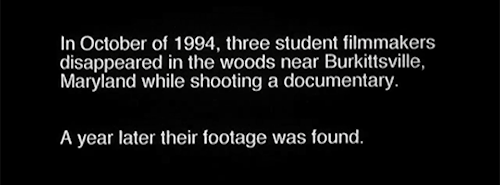
Although many may think that it was the first of its kind, the found footage format of filmmaking has its roots in 1980 with the release of “one of the most controversial films ever made”, Ruggero Deodato’s Cannibal Holocaust. The film follows an anthropologist on a rescue mission to find a film crew who venture into the Amazon to film indigenous tribes. Monroe, the anthropologist, finds the footage the dead crew shot, and it is presented as if we are watching it as Monroe is. Now, I will admit by description is rather vague as I did attempt to watch the film, but I honestly couldn’t make it through because there are scenes that are just too graphic for me.
The film has perhaps the most extensive disclaimer I have ever seen:
“The following motion picture contains intense scenes of extreme violence and cruelty. As distributors of this film, we wish to state with absolute sincerity that by no means do we condone the artistic decisions employed by the makers of this film. However, as firm believers in the constitutional right of free speech, we do not believe in censorship.
Therefore, we are presenting Cannibal Holocaust for the very first time in its uncut uncensored original form, with all sequences photographed by the filmmakers however offensive and repugnant, presented fully intact. What you will see will definitely shock and offend you. Nonetheless, it should be viewed as a disturbing historical document of a bygone era of extreme irresponsibility which no longer exists and hopefully with never exist again”
Initially the phrase ‘definitely shock and offend you’ did make me scoff, because I honestly thought that a horror film made in 1980 would be a walk in the park. Boy, was I wrong. Do yourself a favour and just don’t bother watching this film. I can handle pretty much anything, but this film contains scenes of violent rape and murder, and live killing of animals. It is honestly not worth it, as the reast of the film isn’t that great, the acting is pretty terrible.
Anyway, back to it. Cannibal Holocaust was such a controversial release at the time, because of the sheer explicitness of the film, and because everyone thought it was real. So real that the director was arrested on charges of obscenity and then murder, as the director told the actors to go into hiding a year after the film was released to create authenticity, as soon as the actors resurfaced to give testimony, the charges were dropped, but he was still fined for charges of animal cruelty.
Before The Blair Witch Project there were only eight films of its kind made, after it’s release in 1999, there have been around 150, that’s 150 in the space of nearly 20 years. What made The Blair Witch Project so successful that is inspired so many more filmmakers to create similar found footage films?
This notion of the authenticity of found footage films is perhaps its biggest draw and the most masterful example of creating an authentic narrative is The Blair Witch Project. The films genesis lies in 1993 when the directors Eduardo Sánchez and Daniel Myrick discovered that some paranormal investigative documentaries were often scarier than fictional horror films, and got to work on the film, initially creating the mythology that would be the basis for the ‘documentary’.

Set in Burkettsville, Maryland, formerly ‘Blair’ the mythology is based on a witch who was murdered by the townspeople, her spirit supposedly continues to haunt the woods surrounding the town, causing the deaths of numerous people from the town.
Heather, Josh and Mike, the three students featured in the film set out to the woods to film a documentary about the Blair Witch, after two days they get lost in the woods leading to them supposedly dying at the hands of the witch, however the ending is left purposefully ambiguous, showing no deaths on screen. However, the events that occur in the last 10 minutes suggest the death of the filmmakers, due to our knowledge of the mythology of the witch.
This mythology is fleshed out even more in the mockumentary that was made by Sánchez and Myrick, and subsequently premiered on the Sci-Fi channel before the film was due to be released. The mockumentary delves deep into the story of the witch, but also contains interviews with the missing student’s family and friends. If this wasn’t enough, there was also a website made providing all these details, with even more pictures of the evidence found with the footage shown in the film, therefore, “The Blair Witch Project does not begin and end with the theatre release; the film is a piece of a broader narrative” (Keller, 72). The website and documentary were so successful that an ex Maryland police officer offered to help in the search for the lost students. Which was only exemplified by the actors being listed as deceased on IMDB.

With the mythology set, the authenticity of the film does not stop there. The shoot in the woods lasted eight days, in which the three actors were pretty much left to their own devices. There was no script written for the film, just a guideline of the basic narrative. Each day the actors would leave the film rolls in a set location found of the GPS by the rest of the crew, and they would be left with food and very small amounts of direction.
Myrick the co-director describes the film as “not like a normal film: the actors would work the cameras, film each other all the time” they only intervened if they felt they needed to tone it down and when they needed to create the nighttime scenes in which they would shake the tent make creepy noises. Keller suggests that “within the semiotics of the film, the same unstrady images that reveal the presence of the camera also suggests ‘reality television’, a genre of film that lacks the polish of cinematic realism, but signifies the authenticity of the events depicted” (74).

The aftermath of all this hard work, left cinema viewers stunned by the film, and had them asking, was it all real? It must be there was so much evidence to suggest so, back in the day, if there were official websites on the internet, then it must be true. However nowadays we have learned our lesson and try not to believe everything we see online.
For me, I watched the film not really believing it was true, but it’s the notion that it might be legitimate that makes the experience so exciting when watching it for the first time. It’s all part of the experience and is a large factor in its success with audiences. Sadly, in 2018, when you do your research, it is very clear it was a fabrication; made all clearer by the sequel Blair Witch released in 2016…but we shall get back to that.
In the (nearly) 20 years since The Blair Witch Project, there have been a plethora of found footage movies, most are horror films, the odd one goes into the realms of science fiction, superhero films and even comedy. Arguably the most famous/successful are films such as Paranormal Activity, [REC] and Cloverfield.
Paranormal Activity kept the tradition of The Blair Witch Project alive by pushing the idea that the footage found features the deceased and could potentially be showing real life events. Cloverfield does suggest this, but the thing that draws the viewer away from the feeling of ‘real life events’ when a giant monster starts crashing through New York, which, we as viewers obviously know did not happen. I am not critiquing Cloverfield at all, as it is simply taking the genre further by exploring different narratives. Paranormal Activity however, I will nitpick (even though I love it).
Paranormal Activity begins like The Blair Witch Project with a disclaimer:
“Paramount pictures would like to thank the families of Micah Sloat and Katie Featherson and the San Diego Police Department”
From the beginning of the film, you expect a Blair Witch Project-esque film, which in some respects, it is, and does it relatively well. However, my issue lies with the lack of effort that is made to make the events seem as ‘real’ as possible. There is little background information relating to apparent events I mean, it would have been cool to list the actors as dead. But I guess the internet must be to blame for this, we are so god at squeezing out information that it would probably seem like a cheap marketing trick to attempt what Blair Witch Project The did.
But, I mean sometimes, they didn’t even try. Like it was common knowledge that there were multiple endings…which makes no sense if it was a ‘found footage’ film. How can they die in two different ways? It immediately takes you out of the ‘real’ world of the film.
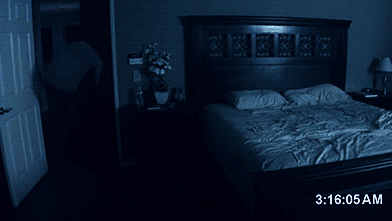
Sequels are also a glaringly obvious issue with attempting to carry on the façade. A mere three years after the original film, Paranormal Activity 2 was released. Now, the illusion is broken well and truly, because we then question the chances of someone else connected to filming the events that are linked to the original film; and lemme tell you the far-fetched narratives that are in place so that they can have the excuse of calling it found footage. The first made sense, the second was a bit of a stretch, the third, a little bit more so apart from the fact that they had to change the VHS tapes every, like 8 hours or something silly, the fourth again, is a massive stretch. But, I mean they are still quite scary, one moment in the third one made me well up it creeped me out so much, so I guess they did the job there. I could write so much more about the Paranormal Activity films, that’s for another time, perhaps...
I mentioned the 2016 sequel to The Blair Witch Project, simply entitled Blair Witch earlier. Now, I was legitimately excited for this, I thought, hey, what could go wrong. They could perhaps learn from how great the first film was … but alas, it was not to be. Blair Witch follows Heather’s brother, 20 years after her disappearance. He heads off into the same woods to see if he can find her, because he is convinced that she is still alive in the house. He has a bigger camera crew and has two weirdo locals with him as well.
Now my first big gripe was that the camera continuation was completely off, but I now know that the crew have camera earpieces… which I didn’t even notice, but surely if it was on your ear, like your cheek would get massively in the way.
For me the film failed to capture the sense of desperation that flows through the original. It was down to complete laziness from the directors, to even make it seem the slightest bit authentic. The ear piece cameras and the GoPro are so unbelievably HD and graded, the script is just terrible, the actors are equally bad. You can tell that they had a film crew with them the whole time. Also…they didn’t even bother to shoot it in the same location as the original, it is glaringly obvious that the terrain is in a completely different country.
So we have this:

Versus this:

Another massive break from the original was that they showed the damn witch and added to the narrative of what happens to you when you encounter her. The mystery has totally ruined and feels a lot more fabricated because elements of the supernatural are shown on the footage.
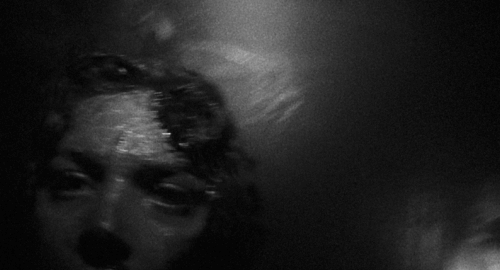
...... ugh.
What annoys me most is that they had so much time to think it through and create something that, wasn’t exactly the same (because that would be pointless), but carried on the legacy rather than being tremendously lazy. I mean, the budget for Blair Witch was $5 million in comparison to the modest $60,000 that the original film had. You can see the budget all over the new film, it just looks far too flashy and is another in a long like of below par found footage movies, I mean, they even had a full on premier with all the actors, there was no effort to even let the audience pretend to believe it was real. And to be honest its link to the original just places the original further into fiction.
Most modern found footage films have gone down the route that Blair Witch did, films like As Above, So Below being one of them, which contains so much supernatural stuff that it is so unbeleivable. The biggest rule in this type of horror, for me is don’t show, dont even tell, just leave it to our imaginations, becuse often that is the scariest thing.
By Siobhan Eardley.
Works Cited:
Deodato, Ruggero. (Dir). Cannibal Holocaust (1980).[YouTube].
Hoad, Phil. “How We Made The Blair Witch Project.” The Guardian, Guardian News and Media, 21 May 2018. Web.
Keller, James. “‘Nothing That Is Not There, and the Nothing That Is’: Language and The Blair Witch Phenomenon.” Studies in Popular Culture, vol. 22, no. 3, Apr. 2000. Web.
Peli, Oren. (Dir). Paranormal Activity (2007).[Netflix].
Rose, Steve. “Cannibal Holocaust: 'Keep Filming! Kill More People!'.” The Guardian, Guardian News and Media, 15 Sept. 2011, www.theguardian.com/film/2011/sep/15/cannibal-holocaust.
Sánchez, Eduardo and Daniel Myrick. (Director). Curse of the Blair Witch (1999). [DVD].
Sánchez, Eduardo and Daniel Myrick. (Dir). The Blair Witch Project (1999). [DVD].
Wingard, Adam. (Dir). Blair Witch (2016) [Netflx].
#horror#blog#The Blair Witch Project#film#Paranormal Activity#Horror Film#blogger#film blog#found footage#Blair Witch#Blair Witch 2016#writing#essay#curse of the blair witch#[REC]#Cloverfield#found footage film#horror blog#paranormal#creepy#paranormal film#uk blogger#films#horror genre
123 notes
·
View notes
Text
A New Film-school for Moving People
❍❍❍

The Interview with "Academy of Moving People and Images" artistic-director Erol Mintaş and curator Elham Rahmati took place in an unplanned café somewhere in Helsinki. The new school is free of charge and open to all “mobile people”. The next deadline for application is on the 28th of February. By Hami Bahadori 31.01.2019 ---
Hami Bahadori: Before we start, how do you feel about the opening of the Academy at the Museum of Impossible Forms? I was a bit surprised to see that many people came on a random Friday to Kontula, while the metro was shut down?
Erol Mintaş: It was great, even though the metro was closed. [laugh]
Elham Rahmati: I think a lot of people are excited about the project and we already received a lot of support.
Hami: Great, let’s start. I am in love with the name of the academy, do you want to tell me where the name has come from?
Erol: There is, of course, a story behind it. When we were doing our test-workshop for the film academy, the name was “Mobile Film School”. And the word mobile referred to our life situation of being mobile. Then we found out there was a school with the same exact name somewhere in the U.S.
Elham: Conceptually, that school was completely different. They were going from city to city. So, the school itself was mobile and had nothing to do with mobile people.
Hami: [laughs]
Erol: We already knew what we want. The school is for film and moving image, and it is for all the people who have been experiencing movement in their lives. So, the name naturally came together. You know, the name is a very difficult issue. As a filmmaker, I know, because when I make films, finding the titles is very difficult. It was the same with the finding the right name for the film academy
Hami: I love that the word “people” is before the word “images”. Was it also important that the idea of movement also applies to the school?
Elham: Yeah, that’s basically the main point. It serves people who in one way or another have experience mobility. Mobility, not in a sense of traveling a lot, but the experience of relocating home. It can be for many reasons such as study, work, migration, seeking asylum, etc.
Erol: Also, we don’t want to again frame people with the same mainstream words that carry a certain weight with them, whether positive or negative. We have to reinvent the vocabulary and also question the existing vocabulary that is used.
Elham: Yes, and that’s the reason we stress on using the term “mobile people” is that it conveys what we want to get across. For example, words such as refugee and asylum-seeker have been used and misused in so many problematic ways that are stigmatizing people. Once we say “mobile people” it puts everyone together.
Hami: Can anyone come and participate, or do people have to have some relationship with mobility.
Elham: Anyone who comes from a mobile background is welcome to apply. Be they migrants, asylum seekers, student, etc. If someone is a Finnish citizen but their parents come from a mobile background they’re still eligible to apply.
Erol: There are also these words that try to push people in a corner, frame them and keep them there. I don’t believe in having any kind of border between people. We don’t want to be in a position of power although we realize sometimes it is inevitable, our academy can only admit a few people and that selection process already puts us in that position. The whole idea of the Academy is that we provide a common ground, to share knowledge, tools and networks. We are also learning along with everyone else who’ll be participating.
Elham: It is not just about lecturing participants. The lecturers are also there to learn from the participants --we prefer to call it participants rather than students.
Hami: So, the School is going to be based in Finland? And participants have to be physically present.
Elham: In keeping the idea of moving people and images, the academy is also going to be in a moving state within different institutions and platforms in Finland. Another important aim of the academy is to provide different networks. After finishing the 1st year, the participants are going to be familiar with so many institutions, and you will be connected to the arts and cultural scene and a receive a certain degree of visibility and networks which you can take advantage of in your career. It is a beautiful thing that so many institutions and actors within the cultural scene of Finland have come together to support this project. It is very encouraging and tells us a lot about the will that exists for change when it comes to diversity and representation.
Hami: Let’s go way back. To some degree, I am familiar with both of you and your art-works. I think, there is something fascinating there, something between history and geography and also the differences in culture. So, now I want to ask about history. How did the idea of the school come to you in the first place?
Erol: When I lived in Istanbul, my filmmaker friends and I were interested in issues such as “How to make the film industry more diverse?” We started to work on this issue, tried to create films, spaces and also platforms. Simultaneously, I kept making my own films and telling my stories. But as you know, in Istanbul, the situation is very different compared to here [Finland]. When I came here, these stories and issues stayed with me. I met a lot of people who had a mobile background in multiple cities around the world. In Paris, Berlin, Stockholm, LA and other places. People were talking about how difficult it is to get into the film industries, especially when you are new in a place.
Later I was in the jury of the Istanbul Film Festival. I watched a lot of films in one week. And almost all the films were “talking about” immigration. Actually, not just film festivals, but Biennials, galleries, and other places.
Hami: What do you mean “talking about”? “more voices” or the same people representing others and mediating?
Erol: Same people from certain geographies keep telling stories about vulnerable people and mediating them. At that time, I started to feel very weird, I wasn’t able to really explain myself. It’s very personal. It was two years after this experience that I said to myself, why not I share my network and give whatever I have to others, so they can tell their own stories.
Hami: It’s very interesting because these issues also exist in the art world. We see a shift in perspective, on “who is representing who”. Not only in topics related to migration, but also on more universal phenomenon such as climate change. In 2017 Venice Biennale, we saw paintings by the Inuit artist Kananginak Pootoogook which was a surprising move by the curators. Instead of curating an artist from NYC or Berlin to talk about climate change they picked an indigenous artist to talk about his personal experiences on colonialization and its relation to climate change.
Elham: Hmm. But very slowly. There have been so many outrage from our communities on this issue. “stop misrepresenting us, stop speaking for us”. More people are realizing that there is something very problematic. They either speak for us or bring in people from our communities who they can manipulate into telling stories that fit their political agenda. By they, I mean different Western foundations, production companies, etc. who profit from projecting and selling a certain image from a non-western world that is miserable and helpless and needs to be liberated or intervened in.
Our aim is to have everyone tell their stories in the way they like. Of course, we have our own red lines ––As long as your films are not sexist, xenophobic, homophobic, Islamophobic or contain any other form of hate speech or patronizing attitude towards a certain minority.
Erol: This doesn’t mean that they can’t talk about things they like. If people feel they want to talk about some issues, they can do it as long as it’s their choice. But, also, we have to question what are the choices and where are they coming from? We should think about how much of our choices are really our own.
Elham: We encourage everyone to tell their stories in a way that is not affected by the market. There is a big difference between stories that actually come from immigrants and their life experiences versus the stories with certain formulas that for example Hollywood tries to sell, immigrant success stories, grateful refugee stories, etc. We should be able to imagine and dream of a film industry that is open to more honest and less market-driven representations of mobile people.
Erol: We are not expecting our participant to only make immigrant or refugee stories, they can tell us a love story or a science fiction one. They don’t have to share their personal stories if they don’t want to.
Hami: When it comes to film, the other problem here is the role of the education, which most of the times boils down to ethics. In another word, while school is trying to make “successful artists”. It’s telling students what not to do if they decided to go somewhere exotic. Particularly, in documentary and ethnography film-making, which still has a reminiscence of the detached, sovereign and unchallenged gaze of the observer.
Erol: Every media has its entertainment part that deals with capital, selling, celebrity stuff, famousness, etc. It also has another part which enables people to express their ideas and philosophy or to change something by sharing and communicating. This is what we call the “artistic” part of any kind of media which lets you communicate what you deem as valuable to the audience.
Elham: We have to mention something important here about the academy and one of the things that makes it unique among other things. A free film-school with an English working language doesn’t exist in Finland. As far as I know, there is no such a platform in Europe either. Film academies charge students very high amounts of money which very few people can afford. This is one of the reasons that film industries are often elitist and very difficult to enter.
Erol: A free film school is so unusual that some people think that there is a fee for this academy as well, I want to clarify that AMPI is completely free of charge.
Elham: It’s interesting, We are getting messages from people in other countries across Europe asking if they can apply.
Hami: …But they have to be here physically. right?
Elham: Yes, and the priority is for people who are already in Finland. But if you don’t live in Finland but are committed to moving here for the sake of this academy then you can certainly apply and we will take your application into consideration.
Erol: The participants have to be present at least, 80% of the time. And for us, the most important thing is the result, which is the films. We wish our participants to make strong films at the end of the year.
Elham: We also hope that AMPI can create a strong community, generating collaborations between artists and lecturers, or lecturers among each other.
Erol: We have a lot of the key players in the Finnish film industry and the art-scene working with us, whether as collaborators or in the board of advisors. Organizations such as YLE, The Finnish Film Foundation (SES), Aalto University (ViCCA, Critical Cinema Lab), Goethe Institut Finnland, G.A.P, HIAP, Design Museum Helsinki, Museum of Impossible Forms, Third Space, Taidekoulu MAA, Caisa and Publics.
Elham: About the participants, we encourage everyone from different levels of professional backgrounds to apply, even though a lot of people might say for example that I already have a BA or another sort of training in film. You can always get to learn more from our team of lecturers and also participants.
Hami: When is the deadline to apply?
Elham: 28th of February 2019 and the classes start in April 2019.
Hami: Thank you very much
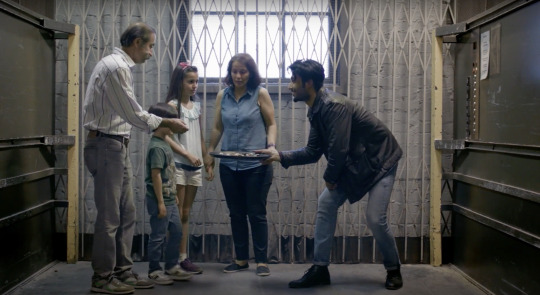
Image source: http://academyofmovingpeopleandimages.com/
2 notes
·
View notes
Text
To be good at something, you must first be willing to be bad
I have taken an intentional hiatus from writing fiction. I suppose my bouts of writing on philosophy, psychology, business and self-development have also pulled me away from here in many ways. Yet it's not dead. I'm happy to come back from time to time; like picking up the phone for an old friend. You are flooded with why you were ever friends in the first place. It feels good.
I've been wrestling--these days more than ever--with understanding why I feel compelled to do something that I probably am not very good at, that takes up a ton of my mental energy (something I should really be sustaining), and that doesn't really have any positive impact on my life. At least not tangibly.
What good are the 3 full-length screenplays I've written? All they do is take up space in a drawer.
Yet, I feel compelled to return to fiction somehow.
Is it the pure imagination? What is it about story that is so intoxicating?
Life is finite. I am ever more aware of that. I only have a few hours everyday to do what I want, and there is a lot of great things I could spend it doing (hence quitting Youtube and Reddit).
I think there's certainly a part of me that wishes he could be an author. The idea of spending my days writing, alone, not checking my emails, focusing on a fantastical story of whatever I dream: it all sounds so exciting.
But reality is much more cruel.
Editors submit feedback on things you don't care to fight over. Your topic and outcome of choice is hugely influenced by your target readership if you want any hope of success. You don't get to write leisurely: the goal is always to output something quickly. The marketer in me knows that a strong internet presence can make up for shortcomings in other areas of talent. We also know that writing involves a heavy grind: it is to be done day in, day out for as long as you can remember.
The inspiring story of a humble Stephen King writing novels in his spare time after teaching English in school makes it feel like it's possible for anyone. But it's not.
The man is a genius: not in the fantastical sense, but in the literal sense. He has a god-given talent that is absolutely unlike anything else most people are given. He is lucky enough to have realized it and leaned into it.
I recognize that my penchant for art and storytelling is a visual medium: photography primarily, filmmaking secondarily. And while it is much more possible to make a living doing either of those things (I did them actually!), I know better than most that mixing money and passion has a way of spoiling all the fun. You get focused too much on the money, the passion becomes the minority (if any remains at all), and you realize that you're just as miserable as you were in your day job before this. No passion is strong enough to stave off the need for, and love of, money.
All of this hardly hits on my biggest feeling of obligation which pertains to my faith and the spreading of the gospel. What am I doing to actively teach others about Christ? Am I being far too passive? Have I really done anything to further the case for God in modern culture? Am I silent on important things when I should be speaking out more?
Perhaps my Man Not Brand blog is a silent form of rebellion. Anyone that reads it (all 3 of them) would be able to see my many objections to society. But no one reads blogs anymore, which brings me full circle to the marketer and businessman inside of me.
I have a hard time doing anything that doesn't get recognized by others. I don't mean that broadly: I mean to say I have a hard time writing when I know no one will read it. What good is it then? So worse still, what good is fiction--and especially screenplays--if literally no one but me sees the hours upon hours of work that goes into each one?
The utility of a thing is one of my most utilized measure of worth.
I do believe in objective truth where things can be measured. I do not believe measuring is the issue (as most of society does).
I'm rambling a little and speaking in circles now. It's all only relevant to a degree.
Because at the end of the day: it's my life, and I can do what I want with it. So long, anyways, as I'm led solely by my Christian faith and fulfilling my chosen duties as a husband and father.
So what if no one reads it? I often think that. So what if I don't understand the utility of these things right now? Does that mean that surely none can exist?
Of course not. There can be tons of utility and purpose for something, even if it is not immediately realized or evident. Does that mean we shouldn't participate in them?
One of the last thoughts I have is around drumming.
It's even stupid to bring it up, but maybe that makes it all the more evident that this is an ongoing conscious choice I have been making.
I love the drums. They are incredible. I also love piano--what a magnificent instrument! Every time I dream about buying one or the other, and dedicating part of myself to learning them, I am confronted with a conundrum.
Wouldn't my energy be better invested in furthering my talents and abilities in guitar, which I've already invested a considerable amount in? Which will surely outlive any other musical instrument I might try?
Maybe this is a poor way of thinking. Creativity is experimentation in some ways. But I like to complain about the box I've drawn around myself ("Guitar only") and claim that this box is the reason I am bored and creatively unfulfilled.
This is false. I am just not trying hard enough.
I am not denying that a new spark of creativity can be found by stepping outside of our self-drawn boxes.
But for how long? And for what purpose? And at what cost?
Do I risk diluting my guitar skills if I take up another instrument? Guitar which is something I have already dedicated and re-dedicated myself to countless times over my 17 years of playing.
So why should I stray from photography or filmmaking (with writing fiction) when I already have opportunities to continue developing my skills?
I suppose it is stupid, because there was a point in which I did not have skills at guitar or photography--when I was merely a novice and could claim I was better at other things.
What if I'd never started on guitar or photography because I was "bad at them" in the beginning?
How does anything become something you're good at? By wading through inexperience and lack of skill, surely.
So why should writing fiction be any different?
While I can't extend backwards my length of devotion to the art of writing fiction, I can extend it in the future.
And if we fast forward 10 years of writing fiction, and compare it alongside photography (currently 14 years of experience) and guitar (currently 17 years of experience), it won't feel quite as disproportionate as it does now.
And, above all, surely there are principles of art, humanity, creativity that can be gleaned from every discipline. Surely this is why I love psychology, philosophy, and marketing so much: because my access to those things allows me to draw parallels between other art forms I love.
I was not expecting to create an argument in favour of writing fiction today. And I still am perhaps not convinced of myself. But I think I've got a bit more to chew on.
0 notes
Text
Zack Snyder's Justice League, 2021 - ★★★
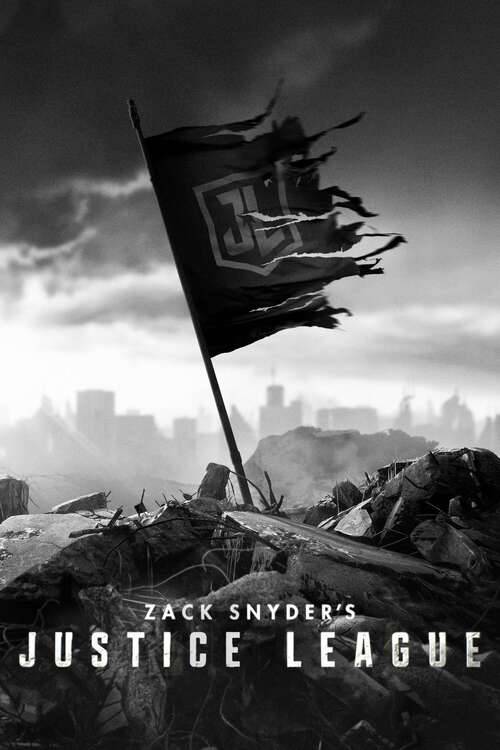
Daddy Issues: The Movie.
I'm conflicted about the existence of this film; as an exercise in studio interference it's fascinating, as a parable of what can happen when fans rise up, it's a cautionary tale, and as the shape of things to come, it's questionable. I don't think fans should get to decide anything; hiring the correct filmmakers and giving them creative freedom would be the ideal option because you give the people what they need and never what they want. What they want, as evidenced by everything, almost always sucks and they're left unhappy anyway. And this film might be the exception that proves the rule.
And although Zack Snyder's Justice League was a film worth creating from the butchered remains of the original incarnation, it shouldn't have come at the behest of how much vitriol was cast out there in the process, and it shouldn't be a signal that a rabid and butthurt community of internet trolls that believe they deserve whatever they want, exactly as they want it, should ever influence the film industry ever again.
This should instead be a reminder to Studios that they know about as much as Marketing departments or gamblers or stock market traders: they're just pissing in the wind and when it lands in the toilet they claim it's by some kind of design of their own making and brilliance. Hire somebody good and get the fuck out of their way. At least if it's shit (like this film basically is) it is the fault of one person's vision and I'd rather have a noble and coherent failure than a luke-warm, mediocre carcass of a Frankenstein's monster made up of opinionated Suits, en-vogue and focus group-driven decisions acting only as a commercial for toys like 2017's Justice League was.
So the film itself? It's incredibly enjoyable, I had an absolute blast with my family round watching it like an old-school movie night. Is it a better movie? Yes, 100% in practically every way. Is it a good movie? Nope! But it's one person's coherent vision, I just hate that vision and I don't think he pulls it off.
Snyder constantly undercuts his own good ideas by his own execution, stumbling into his own sandcastles; some sequences have some really fantastic starts and then they're shot and edited in a way that makes me crawl inside out with cringe; singing a Nordic-style Aquaman song: great, having someone really close up sniff his jumper and sing right at us: horrific. And there's legion of these terrible choices by Snyder, usually things that don't make logical sense but mean he can do something because it's simply cool. (Martha Manhunter anyone?) But we already know by now that cool on its own isn't enough. Snyder doesn't. Having Batman say "fuck" isn't cool, it's dumb. Having Superman say a cocky (rubbish) one-liner when he saves someone from Steppenwolf is out of character, it's dumb. More than once I was able to predict what a character was going to say before they even said it. Come on, this isn't Trey Parker and Matt Stone's Team Justice League.
On the undeniable positives are the colour grading, score, the reels of added and altered material and more. Most of the added scenes are way, way better, more coherent and the film looks great actually. It does look Olympian and classic as I imagine he wanted it to, like the cave murals Diana sees. The extra character and coherence allow the jokes and interactions to breathe; Wayne is a little funnier, Diana, sadder, Cyborg, actually here for a change with something to do, and seemingly powerful, and Flash (thank god) not annoying. Even Irons' Alfred gets basically the best material and comes out of it my favourite character. Truly the Alfred of the group.
What doesn't work with this is that there's so much slow-mo that it becomes laugh-out-loud funny and goofy rather than impressive and dynamic, and in a 4-hour long film, you'd better be damn sure that amount of slow-mo is necessary, even in the slow-mo shots you can palpably feel they drag on for a few seconds too long each time.
And my god let's talk about the soundtrack. So Snyder has now consistently proven himself to be awkwardly tone-deaf to good music in all of his films. He can't pick an appropriate track, he can't pick an ironic track. Every time he does one of his patented slow-mo, nothing sequences over a full track of music (it feels like) it's so awkward I almost got up and left my own fucking house. There's like five of these.
But the action here (apart from being blasted in the eyeballs by insane amounts of bright lights) was all really genuinely good here, he's got it down, the dynamism didn't feel stodgy and CGI-ified, wasn't just a big invulnerable guy bashing someone aside for ten minutes, they fought as a team, it looked and felt fun, and at times, really tense and involving. It's a huge step up from whatever they did for the theatrical. The Amazonian stuff was motivated, gripping and grand. Anything with Steppenwolf felt imposing and had heft and tactics to it. Bravo.
Speaking of Steppenwolf, his Middle Managers and Head Office in the form of marble liquid Henchman, Darkseid and CGI Anette Benning(??!!) felt like strange meaningless additions, as did the anti-life equation shit (this is what Marvel doesn't do, they're expert-level at exposition for newcomers and easter eggs for fans combined). Darkseid looked like a troll, neither imposing nor unique or cool, and I'm not talking an ordinary troll, I mean one of those shit ones that gets turned to stone in the sun, not even a proper fighting troll. He looked like the first mini-boss encounter in a Lord of the Rings videogame. But...
But Steppenwolf looked awesome and I actually liked him here and his Simp for Daddy schtick. I laughed at him a lot, but like Synder I had a lot of endearment for him and his cute, sad, hopeful eyes. Daddy please love me! I promise I'll do better! I can't explain why he worked this time but he did. Maybe it's because the story felt interesting (dumb but at least it all made sense internally) and it felt grand in scale and scope and had stakes and whole added motivations for everybody.
Speaking of what else worked, yes I enjoyed the 4:3 aspect ratio, I thought it would just be Zack Snyder wanking himself off again (see: Justice League: Dark or whatever they'll call his upcoming Black and White version) but I kind of loved it, it was almost euphoric and actually did replicate some of what going to the IMAX felt like. I liked feeling like these colossi of comic books were towering above like statues.
What didn't work was that the chapter headings had nothing to do with the chapters at all or anything that happened in them which felt strange. Also, characters over-egg their lines as if we're dumb and keep stating the obvious in such a first draft way that I felt myself getting stupider.
One of my main gripes is if you keep trying to one-up yourself, these character do not feel understandably epic and powerful. They're all kind of idiotic and silly and po-faced and posture so much and say snappy one-liners and prance around like Chads. Snyder thinking he’s some kind of subversive genius and all that is sweet, but most of time I'm laughing at his cloying fan-service. He's the kid that keeps telling you how great he is and you don't mind because you can see he's got no friends and he's been bullied. Snyder isn't as aggressively dumb and bullish like Michael Bay is, for example, and Snyder's movies are largely coherent. But he's trying too hard and I just don't like his vision. As little elseworld graphic novels this kind of shit between Batman and Joker works, or in films like Joker you can do some out-there things, rather than in this, a mainline, flagship series.
Zack Synder is a little like a first-time Dungeons and Dragons DM trying to impress his table with all his edgelord grittiness and "vision"; He is a child that has two figurines and is smashing them together and yelling "Look! Look what I'm doing! Superman is beating everyone up! LOOK!" Zack Snyder's Justice League is simply, more than anything, endearing. That's the best way I can describe it.
Endearing.
And this film being endearing means I can't hate it, even though I think it's rubbish; because if a child builds a fortress of Lego, it's not exactly the Taj Mahal, but it is impressive. But when he knocks it all down I'm right there yelling for him to pick up all the destroyed pieces now because it can't always be playtime. A film can't just be spectacle and chaos and whatever-the-fuck-you-want. It has to be about something.
Justice League is about nothing. The Dark Knight was about Chaos in a system used to Order even if there was chaos inherent in the order. And it asked you to look at that chaos vs unbridled chaos. With both Dent and Joker as two sides of the same coin; chaos and order, and it put that paradox or that choice to the people of Gotham. It was about surveillance states, money, and sacrifice. And so much more. The Dark Knight subsequently became timely and timeless.
Justice League is about nothing and it will fade into nothing because of it. The euphoria will pass. It's OK it exists. It OK that we move past it now.
source https://letterboxd.com/offworldcolony/film/zack-snyders-justice-league/
0 notes
Text
A White Actor Grows Some Bollocks - Quill’s Scribbles

You may recall that movie studio Lionsgate got themselves into a bit of hot water last week when they announced the casting of Ed Skrein as Major Ben Daimio in their upcoming Hellboy reboot. The problem was Major Ben Daimio is a Japanese character in the source material, making Hellboy the latest of numerous sci-fi and/or comic book adaptations to whitewash a prominent Asian character. I and many others made our views heard, voicing our strongest and angriest objections to this blatant bit of racist erasure (for whitewashing is objectively racist and totally inexcusable) just as we did with the likes of Doctor Strange, Death Note and Ghost In The Shell. But unlike those projects I just listed, the most extraordinary thing happened. Somebody listened.
Oh not the studio obviously. No, it was Ed Skrein himself. Realising the hornet’s nest he had kicked, Skrein actually announced via his social media accounts that he was dropping out of the role.

This open letter has received a positive response from fans and readers. Hellboy producers Larry Gordon and Lloyd Levin made a joint statement in support saying:
“Ed came to us and felt very strongly about this. We fully support his unselfish decision. It was not our intent to be insensitive to issues of authenticity and ethnicity, and we will look to recast the part with an actor more consistent with the character in the source material.”
Even Hellboy creator Mike Mignola chipped in to offer his praise for Skrein’s decision to step down.
Now it would be easy to take a very cynical approach to all of this. Perhaps claim that Skrein only stepped down because he realised the damage all of this backlash could do to his career, but for once I’m willing to put aside my cynicism. I do actually believe Ed Skrein’s sincerity here. He seems to be genuinely apologetic, initially not realising the implications of what he was doing and now seems determined to make amends.
However I’m not exactly willing to praise him for his decision. At least not to the same extent others are. I can understand why people are praising him so heavily. This is an almost unprecedented move. Having put up with loads of A list white actors giving the weakest and most pathetic excuses to justify their own racist bullshit, the idea of a white actor growing some bollocks and actually stepping down from a whitewashed role purely on moral grounds is a novelty. He quit a tentpole movie purely because it was the right thing to do, and I am grateful for that. But can we try and keep this in perspective? This decision wasn’t courageous or brave. It’s just an actor turning down a role. A role that should never have been offered to him in the first place. While I’m pleased that Ed Skrein did the decent thing in the end, the fact is this entire situation should never have happened in the first place. Asian characters should be played by Asian actors. That should not be a difficult concept for filmmakers to wrap their heads around, and I feel I should point out I still don’t trust Lionsgate in the fucking slightest. Oh they’re going to cast a Japanese actor as Ben Daimio now if they know what’s good for them, but if Ed Skrein didn’t take the moral high ground, they wouldn’t have learnt a damn thing. Let’s not forget the studio’s initial response to the controversy came from this now deleted tweet from Hellboy executive producer Christa Campbell:

We don’t see colours or race. The slogan for closet racists the world over.
See this is what so many white people in positions of power and authority within the industry need to understand when it comes to POC presentation. Being colourblind sounds good in theory, but in practice it can be very dangerous. When you make an actor’s performance or marketability the only criteria, you end up making stupid mistakes like this. When you racebend a white character, it’s fine. We already have plenty of representation, plus 9 times out of 10 being white isn’t actually integral to the character. For characters of colour on the other hand, you’ve got to take these other factors into consideration. Usually the culture of said character is integral plus it’s important for non white characters to be portrayed on screen not just for equality, but also for variety.
Recently I finally got to watch the Disney movie Moana, and I’m currently slightly obsessed with it. Not just because it’s a fun, smartly written musical with a great female protagonist, lovable characters, funny jokes and a heartwarming message behind it. It’s also because it explores myths and cultures I’ve never got to experience before.
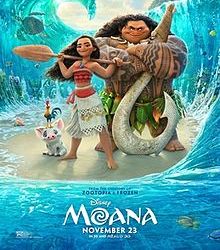
Moana takes a lot of influence and inspiration from Polynesian culture and mythology, most notably adapting the stories of the demigod Maui (played by Dwayne Johnson). I have no idea how accurate this is, but I still loved it because it was something different. After seeing so many fantasy stuff like Lord Of The Rings and Game Of Thrones, which are essentially variations on Norse mythology, as well as the trillions of Christian inspired fantasy stories, Moana feels incredibly fresh and unique. I found all the stuff about Maui and Te Fiti fascinating, and I would love to see more movies exploring these Polynesian myths and legends. There’s such an incredibly rich vein of creativity you could tap into here.
Something else I loved about Moana was they actually cast Polynesian actors as the characters. I’ve already mentioned Dwayne Johnson as Maui. There’s also Jemaine Clement as Tamatoa the crab, Nicole Scherzinger as Moana’s mum, Jango Fett himself Temuera Morrison as Moana’s dad, Rachel House as Moana’s granny, and newcomer Auli’i Cravalho as Moana herself. This is why diversity is so important in films. Not only does it give actors of colour more exposure and allow new talents like Cravalho to emerge and flourish, but it also exposes general movie going audiences to stories and cultures we wouldn’t normally get to see. And that’s why whitewashing is so offensive. It takes job opportunities away from actors of colour and also causes creativity to stagnate. When it’s an Asian character in an Asian inspired story, there’s lots of different directions you can go. When it’s a white character in an Asian inspired story, there’s only one story you can tell. The outsider. The stranger. The foreigner to their ways. That’s not interesting. We’ve seen that done loads of times. Plus if you truly want to immerse the audience in another culture, isn’t it better to have a character that actually represents that culture rather than some white dweeb who knows jackshit about it?
Basically what I’m saying is we need more movies like Moana and less movies like...
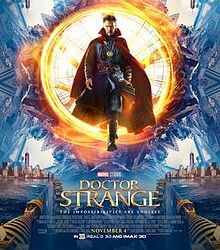
No I’m never dropping this. Fuck this movie and all who support it.
So while I’m pleased that Ed Skrein decided to do the right thing in the end, I’m still going to judge this Hellboy reboot with the suspicion and scorn it deserves. Sure they’re probably going to cast a Japanese actor as Ben Daimio, but only because they have to now to save themselves from further embarrassment. It’s not because they want to. If it was someone like Scarlett Johansson or Tilda Swinton, the studio would still be sticking to their guns and trying to justify their racist bullshit.
I’m glad Skrein managed to fix things and reveal A list white actors like Swinton and Johansson for the selfish, racist, privileged pricks that they are through his own selfless actions, but until the industry properly recognises that whitewashing is NEVER a good idea, nothing has actually changed as far as I’m concerned.
726 notes
·
View notes
Text
Rider on the Storm
Oliver Stone--Hollywood outlaw, cinematic high priest of the lost generation, America’s reigning Angry Young Man--has dismissed the haplessly out-of-touch: those within earshot as well as those not in sync with his favorite decade.
“Get out there! Take a chance! That’s what the ‘60s were--the cutting edge! Ride the snake! Now! Now ! Remember that? Go to the limits! Challenge authority! Challenge your parents! See for yourself! Get in touch with your senses!”
That fusillade is being delivered by arguably Hollywood’s most successful protester. Yale dropout, drug-taking, decorated Vietnam vet turned auteur , Stone has delivered take after take on the ‘60s and their children--"Salvador,” “Platoon,” “Wall Street,” “Talk Radio,” “Born on the Fourth of July"--coming at his theme every which way. Drugs! War! Money! Politics! Stone has made movies to exorcise his and his generation’s demons, annoying the industry with his excesses, filmic and personal, earning a round of grudging respect for ballyhooing a 20-year-old Zeitgeist all the way to the bank. He is even a producer these days, taking home a nice percentage of the gross. The Outsider has become Establishment. Hey, Oliver, what’s that sound, everything going round and round?
After nearly two decades in the business--writing or directing about a dozen films, earning five Oscar nominations, including two awards for Best Director--Stone has mastered the art of turning the counterculture into a mainstream, bankable product. Today he is Hollywood’s most consistent practitioner of point-of-view filmmaking, yet one who just as consistently falls on his own sword.
His films, lofty in their intent to capture the New Left values of the ‘60s, frequently come up short with undistinguished if competent craftsmanship and an in-your-face moralizing. Critics regularly fault his work. The New Yorker’s Pauline Kael wondered in a review of “Platoon” whether Stone was “using filmmaking as a substitute for drugs. . . . There are too many scenes,” she went on to write, “where you think, It’s a bit much. The movie crowds you; it doesn’t give you room to have an honest emotion.” If Stone disdains such caviling as aesthetic elitism--"Critics say that; audiences don’t. I won’t ever make boring movies, ever!"--he nonetheless has his sharpshooter’s eye trained on his place in American film history. Stone still hungers for the imprimatur of artist.
“We don’t practice repression in this country, we practice triviality,” the director says, standing in a Hollywood sound stage on an early winter afternoon. “I try to make films that are bold and on the cutting edge, with ideas that are greater than me--and I try to serve those ideas.”
Now, Stone is set to unveil his latest homage to his generation--"The Doors,” the much-anticipated movie about the legendary ‘60s band, starring Val Kilmer as Jim Morrison, the band’s charismatic lead singer and lyricist. It is Stone’s first film since “Born on the Fourth of July” won him his third Oscar three years ago, and at $30 million it’s his most expensive production to date. It is also his least overtly political--something of a first for this filmmaker who is regularly accused of being anti-American--but one that is not without risks.
With few exceptions--such as “The Buddy Holly Story"--movies about the music industry are notoriously poor box office. And with “The Doors,” Stone is bringing to market a glossy tale of sex, drugs and rock ‘n’ roll come round again in a new age of conservatism. It is a film for the ‘90s, with a controversial protagonist who practiced a particularly lethal brand of hedonistic nihilism; Morrison died of an apparent heart attack in Paris 20 years ago at the age of 27. Stone has taken a calculated risk in opening “The Doors” in today’s sexually nervous and unexpectedly jingoistic climate--the AIDS crisis and the country embroiled in its first real war since Vietnam. “I think we all feel on the edge of imminent disaster,” says Stone about his film’s upcoming release. “One always has that feeling.”
Even by the ‘60s’ break-the-mold musical standards, the Doors were considered sui generis--a home-grown Los Angeles band whose organ-rich, Eastern-sounding melodies, combined with Morrison’s vicious but poetic lyrics and undeniable stage presence, captured the growing alienation of an entire generation. From their first album--"The Doors” in 1967--to their last--"L.A. Woman” four years later--the band’s raspy mysticism and intellectual lyricism embodied the dark side of the ‘60s.
At the center of the band’s appeal was Morrison, the pouty, drug-ingesting “Lizard King” who became something of the Prince of Darkness in an era that did not lack for antiheroes--a figure extolling themes of undeniable attraction for Stone. “Look, I’m in my 40s,” the director says. “So I suppose this film is about the formation of our generation--the values we shared. People were out there, experiencing things, changing things. There were no limits, no laws. . . .”
Brian Grazer, an executive producer of “The Doors,” perceived two outlaws well-matched. “Oliver was my first choice as the director,” Grazer says. “He does what nobody else does--he takes dark, difficult subjects and turns them into hits.”
But hit making, as Stone likes to maintain, is not his goal. Rather, he single-mindedly goes after what he thinks of as the truths of his generation, wherever that search takes him: Vietnam, Wall Street, rock ‘n’ roll, even the Kennedy assassination. He describes the J.F.K. murder, the subject of his next film, which he will begin shooting this spring, as “the most covered-up crime of our era.” Although risk-taking and possibly radical in their intent, Stone’s films are increasingly mainstream, made with ever-larger budgets and more prestigious producers--Hemdale, Carolco and now, with the Kennedy film, Warner Bros. Success, for Stone, is a double-edged sword.
“Success?” asks the director, slightly startled. “That didn’t become popular as a concept until the ‘70s. Yeah, I have much more freedom to make the subjects that I want, but I don’t see myself as Darryl Zanuck. I would feel bad if I got indulgent. All good films come from people with an independent spirit, those who push. But the power of perception in the world is such that fringe ideas, when they are accepted, become mainstream--that because of their success they become a cliche.
“ ‘Platoon’ was a major innovation in our perception of what that war was. I thought ‘Born’ was a fairly radical statement; it took 10 years to make that picture--everybody passed on it. Once it was made and got eight Oscar nominations, it became a successful Hollywood movie. If it had not been successful, it would have been considered an outlaw film. Now, with the Kennedy film--why haven’t they made that already? Because people were fearful that it was uncommercial. I hope I was destined to make that picture.”
Those who know him suggest that Stone is indeed struggling to reconcile his renegade past with his current role as emerging power broker. “Oliver is conflicted about his success,” says one industry executive. “He hasn’t allowed his political sensibilities to get in the way of taking large amounts of money, and he struggles with that.”
“It isn’t about getting successful and having a career,” Stone says. “Going against success as a formula and embracing failure, like Morrison, where death becomes the last limit. . . . You mustn’t let money or power corrupt. I don’t feel in any way that I have compromised. I want to stay truthful to my era.”
STANDING HERE IN THE CAVERNOUS SOUND STAGE, Stone is putting the finishing touches on “The Doors.” While ostensibly another ‘60s film, “The Doors,” colleagues say, is actually a further cinematic echo of the director’s own persona as self-exiled prodigal son. As one actor puts it, “Although Oliver’s films seem to be about social issues, they are really about him.”
In conversation, Stone is by turns boyish, combative, thoughtful and overheated, one who seems to delight in spewing hyperbole as much in person as he does in his films. A husband and a father, he insists that his one regret is, “I didn’t sleep with all the women I could have.” A former drug user once busted in Mexico, he now calls cocaine “the biggest killer I know” but still salutes hallucinogenics as “fascinating.” A relentless advocate of the ‘60s, he disparages Woodstock as “a bunch of Boy Scouts getting together.” A most famous veteran, he is nonetheless disdained by some members of his old unit as a self-righteous blowhard with little sense of humor and a skewed perspective. (“He is very opinionated, over-generalizes the facts and bad-mouths people who have different points of view,” says Monte Newcombe, who served with Stone in Vietnam.)
As is well known, Stone made his mark as a movie maker five years ago when he turned his own life into film--"Platoon,” the 1986 Oscar-winning Vietnam War film that chronicled the director’s 1967-68 tour of duty. The movie won Best Picture and Best Director and grossed more than $160 million. Stone has made similar connections in his other less overtly biographical films. James Woods in “Salvador,” Charlie Sheen in “Wall Street,” Eric Bogosian in “Talk Radio,” Tom Cruise in “Born on the Fourth of July,” all played characters close to the director’s “male, Type-A personality,” says Bogosian. “Oliver makes movies about men under pressure.”
In “The Doors,” Stone evinces a similar fealty to Morrison, a contemporary of the director’s and a man also known for not tempering his excesses. “Jim had a thing where he went to the limits--women, drugs, alcohol, the law,” says Stone, who plays down some of Morrison’s excesses and recut parts of the film to make Kilmer’s character more likable. “His lyrics were earthy--snakes, fire, earth, death, fear, eros, sexuality. But he was also close to the French symbolist poets--Apollinaire, Rimbaud and a little Dylan Thomas. That combination--the high end and low end, black and white, vulgar and refined--I liked that contrast.”
It is a marriage of opposites that also fits Stone, who is described by those who know him as intense, passionate and smart, a prodigious director and writer whose early reputation for womanizing and drug taking never hindered an equally relentless work ethic. “He has the curiosity of a child and an incredible drive,” says Kenneth Lipper, an investment banker, author and consultant on “Wall Street.” “Oliver uses his films as an excuse to search out the facts--the truth--of a situation.”
Others who have worked for him say Stone is a masterful taskmaster who will manipulate, taunt and pressure cast and crew into sharing his commitment to the subject at hand. “He likes to do a lot of sparring to challenge you,” says actor Willem Dafoe, who starred in “Platoon” and “Born on the Fourth of July.” Adds Bogosian: “He expects you to be a self-starter and thick-skinned when it comes to criticism. And if he senses you can’t take it, he will move away from you fast. Being on a set with him can be very punishing. But at the end of the day, everyone wants to be around him.” Kyle MacLachlan, an actor best known as FBI man Dale Cooper in television’s “Twin Peaks,” who co-stars in “The Doors,” says simply, “I miss working with Oliver.”
With so many of the director’s oft-related demons so readily on the surface, so out there, it is a challenge to sift through the rhetoric. Ask Stone what he is looking for in his self-inflicted Sturm und Drang , and he scorns the question as “so obvious. OK, the 49ers to win.” But in the next breath he turns philosophical, cribbing from Milan Kundera, the celebrated Czech novelist: “the ‘Lightness of Being.’ We’re all looking for equanimity of our souls.”
HE IS TALL, ABOUT 6 FEET AND JUST SHORT OF formidable, with an arresting collision of cultures--French-American, Jewish-Roman Catholic--etched into a face that is all but haggard from years of hard living and late hours. Bleary-eyed, dressed totally in black, Stone is sandwiching in an interview in the midst of back-to-back editing sessions for Friday’s release of “The Doors.”
Surrounded by his editing crew, he holds court in a room that seems the extension of himself as both polemical filmmaker and erstwhile Peck’s Bad Boy--everything state-of-the-art and bigger-than-life. Extra-large leather sofas, screen the size of a football field, giant neon clock ticking off the frames. The sequence being edited this day is quintessential Stone. On screen, Morrison, played by Kilmer, heaves a television set at the head of Doors’ keyboardist Ray Manzarek: MacLachlan in flowing locks. The result--exploding glass and screamed epithets.
Stone flashes his signature gap-toothed grin. “There was a sound vacuum, and it’s making me crazy,” he says about the morning spent laying down extra decibels of breaking glass. “Sound abuse. I’m accused of that all the time,” he says. “But this is the noisiest film I’ve ever made. I have to gauge how much the audience can take after two hours and 15 minutes.” In Stone’s hands, “The Doors” is less an illustrated history of the band’s genesis or Morrison’s peculiarly tortured life than a visceral recreation of the world of ‘60s music. The approach is similar to the sensuous verisimilitude the director achieved in “Platoon,” the first Vietnam War film made by someone who had served. “I don’t want to reduce the ‘60s to a formula or say this is all-inclusive,” Stone says, “but it is about the texture of the ‘60s . . . how music was the big common denominator.”
Producer Grazer says the film is less linear and narrative than “a film made from a real rock-music point of view. Oliver has made a movie that shows that world as dangerous and erotic. It has a real feel for the period.”
Much of that feel comes from the director’s personal affinity for The Doors’ music, which he first encountered in Vietnam. He found the band “visceral and mystical,” Stone says. “The Doors were not a mainstream band like the Beatles or the Rolling Stones. Jim hated that whole teeny-bopper thing. There were decency rallies held against him.”
That Morrison’s grave site in Paris still has the faithful trekking to touch the headstone has only burnished the mystique of the tortured songwriter with the Kennedyesque jaw and the black leather pants that would, on occasion, not stay zipped. A well-known abuser of alcohol, drugs and women, Morrison was arrested in 1969 on obscenity charges after exposing himself during a Miami concert. “He was a pirate, a free soul, an anarchist,” Stone says. “I loved his spirit--a combination of James Dean and Brando, sexiness combined with sensitivity and rawness.”
Morrison’s persona transcended not only his performances but also his death in 1971, which Stone recalls as “like the day Kennedy died.” The revival of so-called Doorsmania, as Rolling Stone magazine referred to it, began 12 years ago when director Francis Ford Coppola used the band’s Oedipal song, “The End,” in his 1979 Vietnam film, “Apocalypse Now.” In 1981, the lurid, controversial Morrison biography, “No One Here Gets Out Alive” by Jerry Hopkins and Danny Sugerman, the singer’s manager, was published. That same year, “The Doors’ Greatest Hits” was released and made it into Billboard’s Top 10. By 1981, Rolling Stone had Morrison on its cover with the headline, “He’s Hot, He’s Sexy . . . He’s Dead.”
Hollywood chased the Morrison story for nearly a decade while the Morrison estate and the surviving members of the band battled over the movie rights. Eventually, Grazer’s Imagine Productions held all the cards--a hefty $2-million development package--largely through the assistance of veteran rock producer Bill Graham, who shares production credit on the film. Grazer took the project to Stone--who had just passed on the on-again, off-again “Evita"--and Mario Kossar’s Carolco Productions, which had signed the director to a two-picture deal.
For Stone, directing “The Doors” brought several new challenges. “It was a very complicated screenplay to write,” says Stone, who shares screenwriting credit with J. Randal Johnson, who had done an earlier draft. Using his usual reporter’s approach, Stone plowed through “250 transcripts from people who had known Jim. It was like ‘Citizen Kane’ in a way--everyone had a different point of view.” Stone shot the film last spring with 30,000 extras for concert scenes in San Francisco, New York, Paris and Los Angeles, including the L. A. clubs Whisky a Go-Go and The Central, which doubled as the old London Fog.
Recreating The Doors’ sound on film proved more difficult. Kilmer, a baritone like Morrison, was cast after Stone interviewed hundreds of actors. Perhaps best known as Ice Man, Tom Cruise’s nemesis in the film “Top Gun,” Kilmer had been so eager to land the role that he recorded an entire Doors album, substituting his own vocals for Morrison’s. In a similar move, Stone decided to obtain the rights to The Doors’ master tapes minus Morrison’s lead vocals. He then spliced the original soundtracks with performances by the actors--Kilmer, MacLachlan, Kevin Dillon and Frank Whaley, who learned to play instruments for the film. The film’s final cut contains 25 Doors songs, including such classic hits as “L. A. Woman,” “Crystal Ship,” “Light My Fire” and “The End.” The music was recorded with “a little bit of Jim Morrison’s vocals--and in the concert scenes I have mixed in the actors’ voices, and I defy you to find the difference,” Stone says.
Kilmer describes Stone as “a person of vision and integrity. He has lived triumph and horrors. And I can tell you his life does not pass unexamined. Look at his body of work. It pulls from his introspection, knowledge and vast intuition.”
Indeed, ask Stone what he hopes the reception for his film will be, and he launches into another paternalistic eulogy for the ‘60s. “A lot of people will want to see this the way they wanted to see Tom Cruise in ‘Born,’ so they can be given an alternative way of looking at things,” he says. “These kids have grown up with Travolta and disco, the high-tech world of the ‘80s, and maybe they have never even seen that there is a different, an alternative, lifestyle, a world we’ve lost touch with.”
“WHAT WAS YOUR FAVORITE BAND OF THE ‘60s?”
Stone is asking this over lunch of Thai soup--hot as napalm--set out for him and his guest in an upstairs conference room. With Stone, that isn’t an idle question; it’s a password, a test of character, sort of like the soup he’s ordered--beyond an ordinary mortal’s standards. “Come on, it’s good for you,” he says laughing at his guest’s discomfort. “It puts hair on your chest.”
Shying away from risks is the ultimate sin with Stone, the only child of a privileged Manhattan couple, a stockbroker father and socialite mother. Stone wore a coat and tie every day to prep school, wrote weekly essays for his father--who paid him 25 cents each--and embarked on his well-documented fall from grace as soon as he was able. Says one old friend: “Oliver grew up with a lot of contradictions in his life--Jewish father, French Roman Catholic mother who was this semi-Regine-type character. Oliver led this sort of Eurotrash jet-setter’s life--even after his parents were divorced--where nothing was normal.”
“My mother was never in bed before 3 in the morning,” Stone recalls. “She used to take me to France in the summers, and she was a great fan of movies, took me out of school to go to double and triple features. She was this kind of Auntie Mame person. ‘Evita’ would have been my homage to her.”
His parents’ divorce when he was 16 years old, Stone says, “was like parting the curtains of a stage play and seeing what was really there. I found out about a whole lot of things--affairs--I had been blind to. After that, I felt I was really on my own.”
The divorce also coincided with a larger rupture--Kennedy’s assassination in 1963, the de facto starting gun of the ‘60s. “I had no faith in my parents’ generation after that,” Stone says. “By 1965, I was in Vietnam"--first as a teacher and a merchant marine, later as an Army enlistee.
He briefly attended Yale University, his father’s alma mater, which he says he “hated, especially since it was before women were admitted.” Stone dropped out and headed for Vietnam.
He was wounded twice and earned a Bronze Star and a Purple Heart in a tour of duty that was later chronicled in “Platoon.” “He was never a regular GI Joe,” recalls Crutcher Patterson, a former member of Stone’s platoon. “He was pretty green, a loner and moody, always writing things. Whenever we got a break, he would stop and write a little descriptive story about it.”
During his brief Army career, Stone abandoned the idea of being a writer--he had written a novel at 18--to become a filmmaker. “Being there was a very sensual experience, and I started thinking in visual terms,” Stone says. “In Vietnam, all your senses were awakened. You had to see better, smell better, hear better. It was very sensual, with the jungle six inches in front of your face. You couldn’t think along abstract lines--you had to become more animalistic or you wouldn’t survive.”
He bought a still camera and started taking pictures even before he left for home. Once Stone returned to New York, “I got a super-8 right away and started making home movies.” He enrolled at New York University’s film school, where he studied under director Martin Scorsese, drove a cab, married Najwa Sarkis--an official at the Moroccan mission to the United Nations--and made “short, crude 16-millimeter films that were really screwed up,” Stone says. “They were arty, kind of abstract poems with a touch of Orson Welles and the French New Wave filmmakers--Goddard, Resnais, Bunuel. I was trying to get away from a normal narrative line.”
He was also pursuing a similar line in his personal life. Arrested for marijuana possession in Mexico 10 days after his return from Vietnam, Stone became well known for using drugs, an experience that later informed his screenplay for Brian DePalma’s “Scarface.”
“I started smoking cigarettes on the plane going over to Vietnam,” says Stone. “Once I got there, the guys I liked best had been around drugs for ages, and I started doing acid and marijuana. I also got into the music. I had never heard Motown before then. Jefferson Airplane and the Doors. Jim was the acid king. It was all part of the Zeitgeist. “
It was a taste for substance abuse, topped off with an appetite for pursuing women, that Stone, newly divorced, took with him to Los Angeles in the mid-1970s as an aspiring screenwriter. He soon had a reputation notable even by Hollywood’s standards. “He always had a million women in his life,” says one female former friend. “I don’t think he missed too many.”
In Hollywood, Stone wrote “Platoon,” and although it would be more than 10 years before he would get it made, the script earned him attention as a writer of unusual force.
“I was looking for a writer for ‘Conan’ ” recalls Ed Pressman, an independent film producer who worked with Stone on “Conan the Barbarian” and several films since, including “Born.” “His agent showed me ‘Platoon,’ and I was very taken with it. His script for ‘Conan’ was a great screenplay. Like Dante’s ‘Inferno.’ ”
The success of that film led to other screenwriting assignments--"Midnight Express,” “Scarface,” “Year of the Dragon” among others--all white-hot, unsubtle stories, the type that increasingly became Stone’s signature. He won his first Oscar for “Midnight Express,” which led to his first directing opportunity--"The Hand,” a marginal thriller starring Michael Caine that failed at the box office and temporarily stalled Stone’s directing career. Eventually, he was able to make the low-budget “Salvador” through Hemdale Productions, followed by “Platoon,” a $6-million film that Orion picked up from Hemdale and that saw grosses in the hundreds of millions. After that, Stone was admitted to the big leagues--directing Michael Douglas in “Wall Street” and Tom Cruise in “Born on the Fourth of July.” The latter film, based on Vietnam veteran Ron Kovic’s life story, won Stone his second Best Director award but lost out for Best Picture to the crowd pleaser “Driving Miss Daisy"--a loss that Stone took particularly hard. “We made over $60 million with that film--an incredible success. I guess it was just not meant to be.”
Today, Stone has remarried and divides his time among homes in Santa Monica, Montecito and Colorado with his wife, Elizabeth, a former nurse, and their 6-year-old son, Sean, who plays young Morrison in “The Doors.” Stone hasn’t lost his concern for current events: “I’m praying for our soldiers, who are making the ultimate sacrifice in the Gulf War, but I don’t think Bush ever intended to negotiate. There was a military-industrial complex that pushed us into this.” Friends add that the director’s only real interest these days, in addition to making films, “is trying to set up other films.”
Have Stone’s demons finally gone AWOL? “I didn’t say I didn’t miss my old life,” he says with a half-smile. “I love the concept of suburbia, but I also love going to New York and Europe and Asia, meeting new people. My wife and I are different that way. I have a restlessness that never stops.”
Indeed, as soon as “The Doors” opens, Stone is off to Dallas to begin shooting his version of the Kennedy assassination, a film that Stone describes as “the untold story of a murder that occurred at the dawn of our adulthood. It’s a bit like ‘Hamlet.’ You know, the real king was killed, and a fake king put on the throne.” Suggest to Stone that some of Camelot’s luster has tarnished since 1963, and the director says quietly, “There has been an incredible disinformation campaign put out about him. A lot of misinformation. I am using everything I have to get this film made.”
Ask Stone if he likes where he is positioned now in the industry and he laughs. “Oh, this is the part where you’re going to quote me, right? The outlaw director.”
If Stone is cagey about self-definition these days, friends seem equally divided. Some, such as Pressman, who produced “Blue Steel” and “Reversal of Fortune” with Stone, say the director “is at the top of his game. I was always mesmerized and excited by his personality, but now he is much more comfortable with himself and a lot easier to work with.”
But another Hollywood executive suggests that “Oliver has not changed much. He really hasn’t mellowed. He is conflicted about his ‘financial’ success. But that’s how Hollywood respects you--they pay for what they respect, and his movies now make money.”
Stone does seem to be a man with his eye fixed perpetually over his shoulder, one who keeps a daily diary and who describes the art of filmmaking as giving vent to “that other person that is in you. The shadow self, the one that is always walking behind you. The real you, the deeper you.
“I’m not going to say I’m a lone soul here, wandering through my own soundtrack,” he says. “I enjoy the community of people who love movies. And I like using the power that I have to make things happen. But will I be doing this forever? Maybe I’ll be working in Eritrea or the Sudan, or maybe I’ll become a journalist for Rolling Stone.”
Stone has spent several hours over lunch, repeatedly waving off his crew, but now his impatience is tangible. “I still don’t like the answer I gave you about the ‘60s, how this film relates to this current generation. I felt stupid. I was doing a lot of ‘ums’ and ‘ahs,’ ” he says, suddenly obsessed with his image.
“I don’t want to believe in generation conflict, but it’s there. I feel distant from my own generation, out of step with the people my age who went to college. I always identified more with the Charlie Sheen generation, that younger group who came up, because it gave me new life. I was able to act out my own history through them, skip a generation and go back to it again. Believe me, that’s exciting, and I’m grateful for that chance because our tribal rituals are the same. It doesn’t have to be Jim Morrison or Vietnam; it’s about going out there and finding yourself.”
-Hilary de Vries, “RIDER ON THE STORM : With ‘The Doors,’ Director Oliver Stone Exhumes the ‘60s in All Their Lurid Excess,” Los Angeles Times, Feb 24 1991 [x]
1 note
·
View note